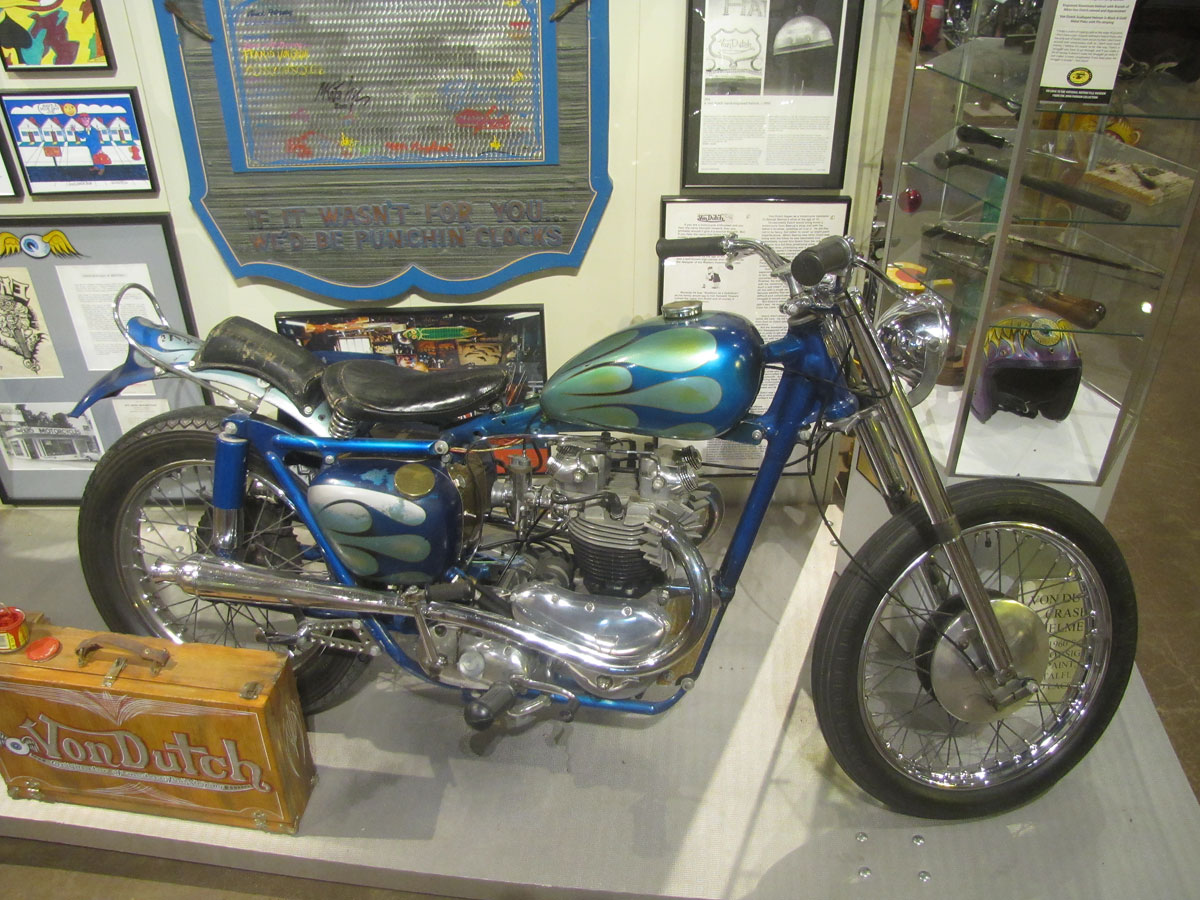
A young man in Los Angeles named Ken Howard began tinkering with his Indian Scout around 1946. Removing the shapely Indian fuel and oil tanks, he installed a smaller gas tank, a simple oil tank. He added upswept exhausts and taller handlebars atop risers. Employing one of his best skills, he painted and pin-striped the fuel tank. The story goes that he street raced it, crashed it, reworked it over and over, making it his own.
Liking what they saw, Von Dutch did similar types of custom modifications to his friends’ bikes as well. There may have been others detailing what came to be known as bob-jobs that way in 1946. Some car builders were likely an influence, but evidence points to Howard, aka Von Dutch, as a spark for a revolution in motorcycle style. And we are still living with the impact and inspiration of his work. Luckily, many machines he painted decades ago retain his paint work and fabrications.
This 1958 Triumph Thunderbird is typical of Von Dutch’s work for customers in the 1950’s and 1960’s. It was created when he worked with the famed Bud Ekins to build modified motorcycles in the Los Angeles area. The leather Bates saddle with pillion pad is typical as are the small tank and narrow rear fender with sculpted custom tail light. The fork is stripped of most lugs, chrome plated and a perch style headlight bracket is used letting the headlight float. Where some would go to a spool hub, Von Dutch ran with racers who knew the value of a front brake so the stock unit, polished, remains. Upswept pipes make the bike light, sleek in appearance as do the low bars. The polished engine cases with a few custom bits is on full display beneath the small tank. A few parts are drilled for lightness.
Some refer to this paint job as “scalloped,” others call it a “seaweed” design. The paint is likely nitro cellulose lacquer and has therefore dulled a bit over the decades. Either way it’s quite understated and nothing like many typical red, orange and yellow flame jobs on black that soon followed. The reversing green/blue metallic scheme is timeless.
While Von Dutch focused more on customs and bobbers than choppers, his style influenced generations of customizers of all types, still does today. And you could say he’s one who opened the door to the style that evolved into the less functional, more outrageous chopper in the 1960s.
This Von Dutch Triumph is largely original, never restored and is part of the Jill & John Parham Collection. You can enjoy the Von Dutch Triumph, other Von Dutch creations and many other custom bikes from all eras when you visit the National Motorcycle Museum before it closes its doors in early September.
Specifications:
-
- Engine: OHV Parallel Twin, Non-Unit
- Bore & Stroke: 71mm x 82mm
- Displacement: 649cc / 30.5 Cubic Inches
- Induction: Amal Monobloc Carburetor
- Compression Ratio: 8.5:1
- Clutch: Multi-Plate
- Starting: Kick Only
- Horsepower: 34HP, Stock
- Transmission: 4-Speed, Foot Shift
- Primary: Roller Chain
- Final Drive: Roller Chain
- Frame: Lugged Steel, Single Down Tube
- Suspension: Hydraulic Fork / Twin Shocks, Swingarm
- Wheels: 19” Front, 19” Rear
- Brakes: Drum, Front & Rear
- Wheelbase: 56 Inches
- Top Speed: Approximately 95
- Weight: 310 Pounds
Leave a Reply
Want to join the discussion?Feel free to contribute!

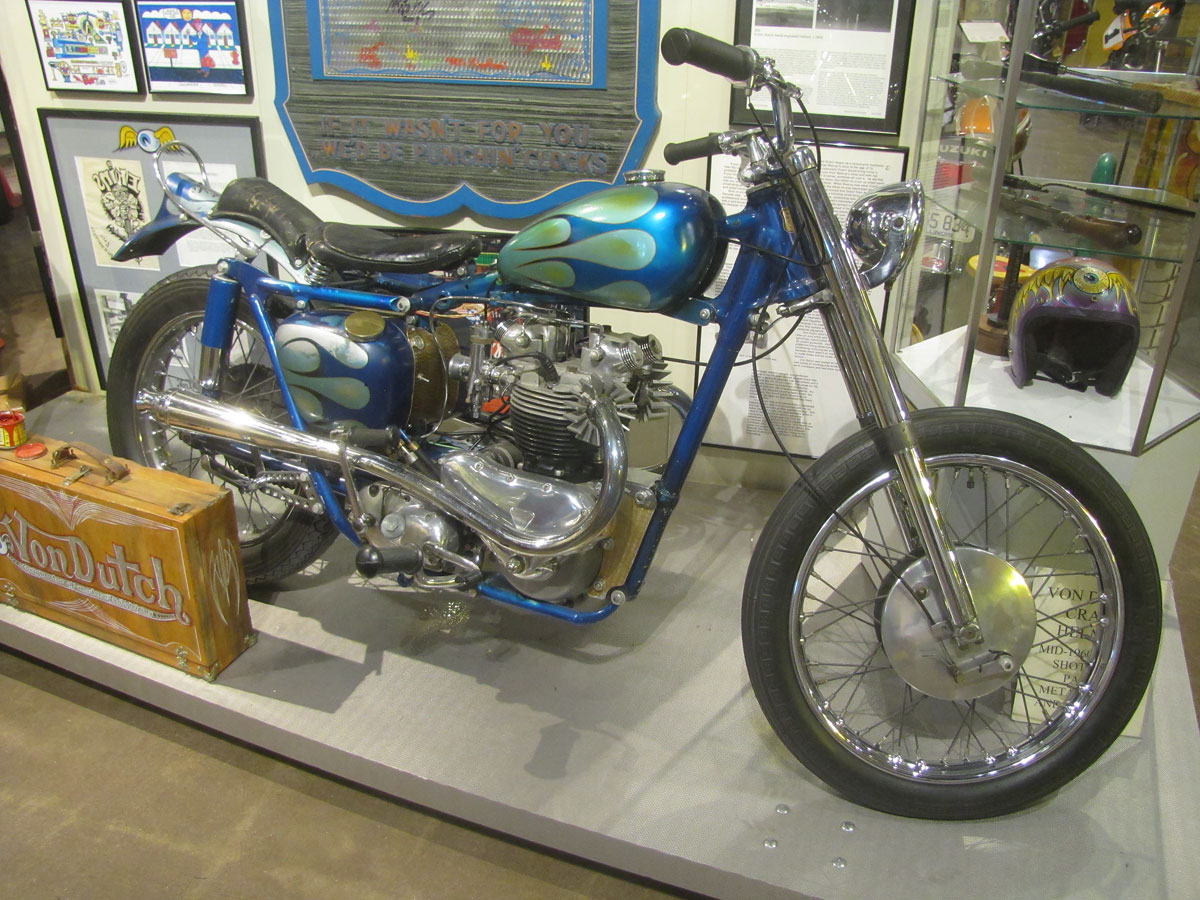
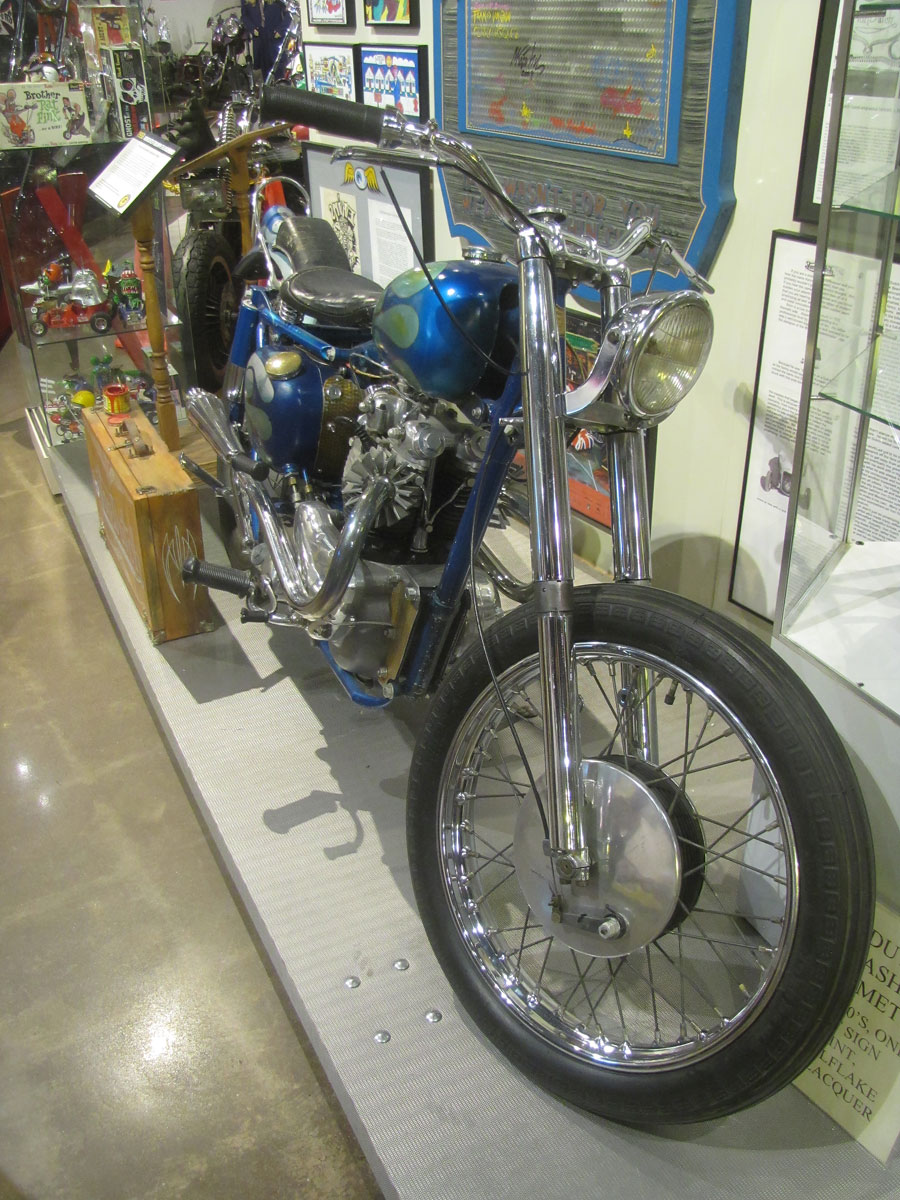
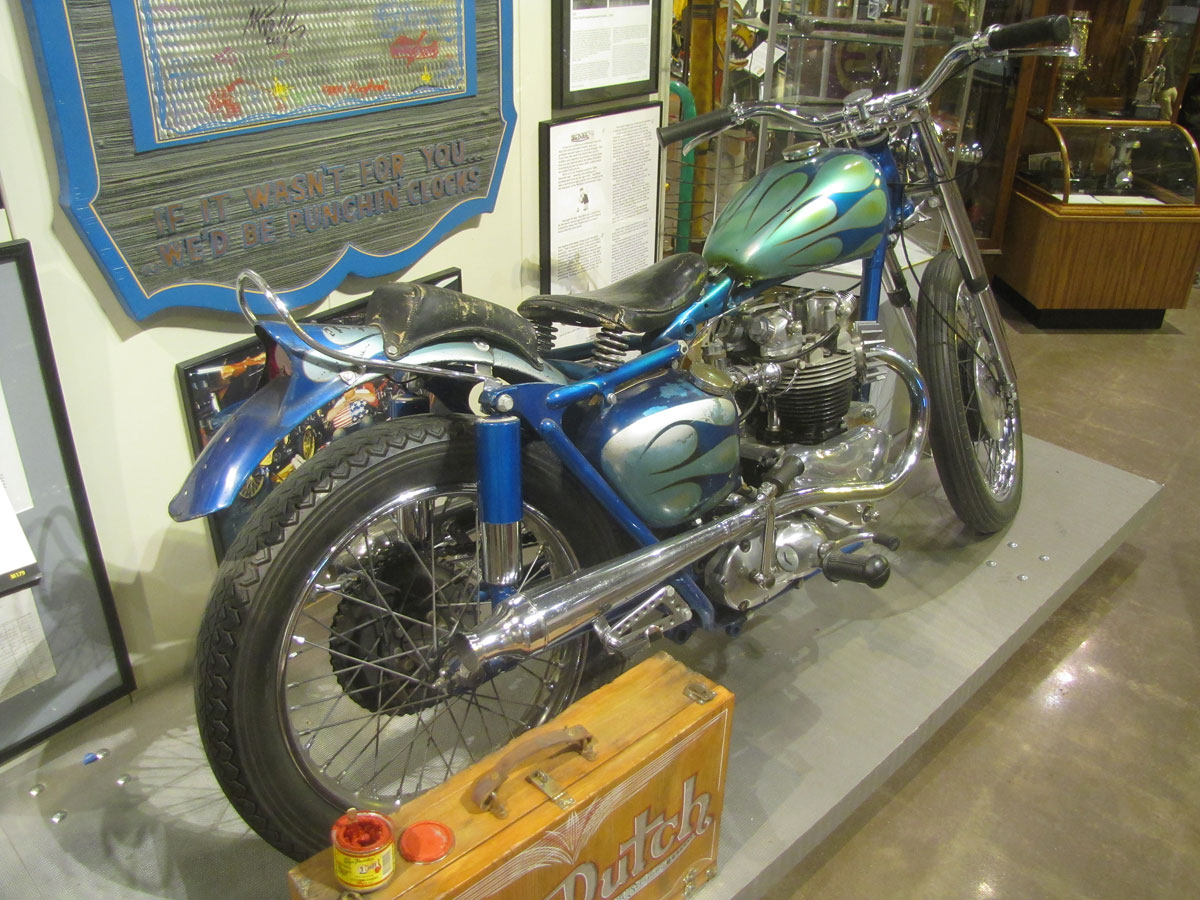
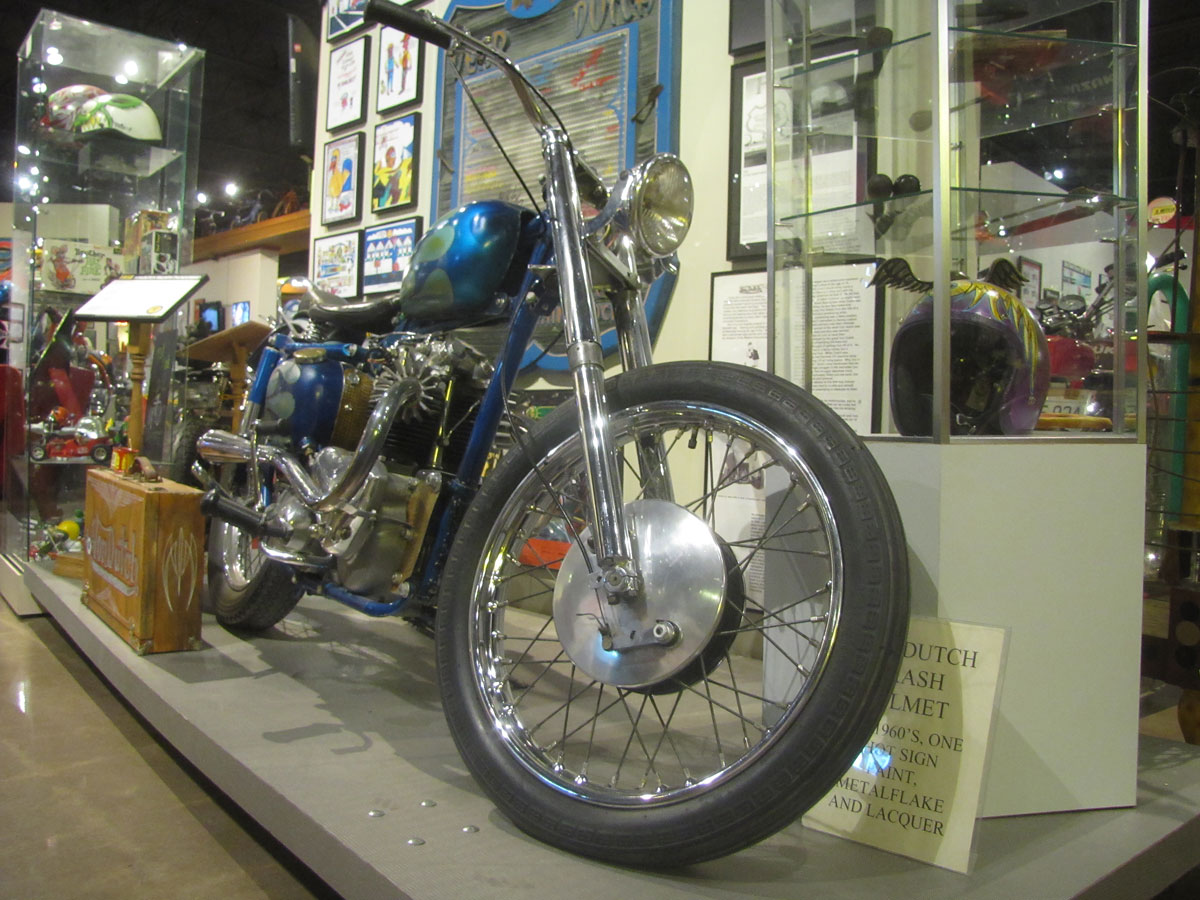
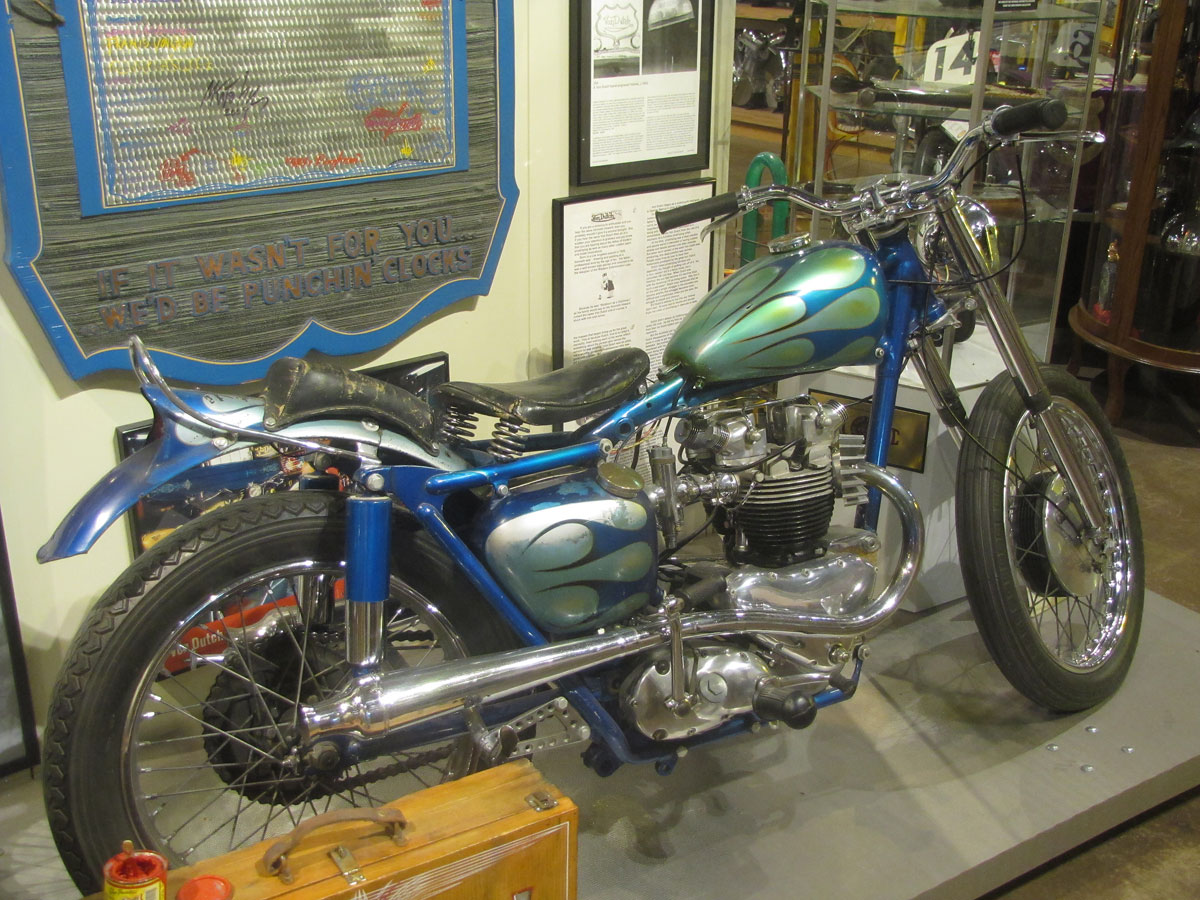
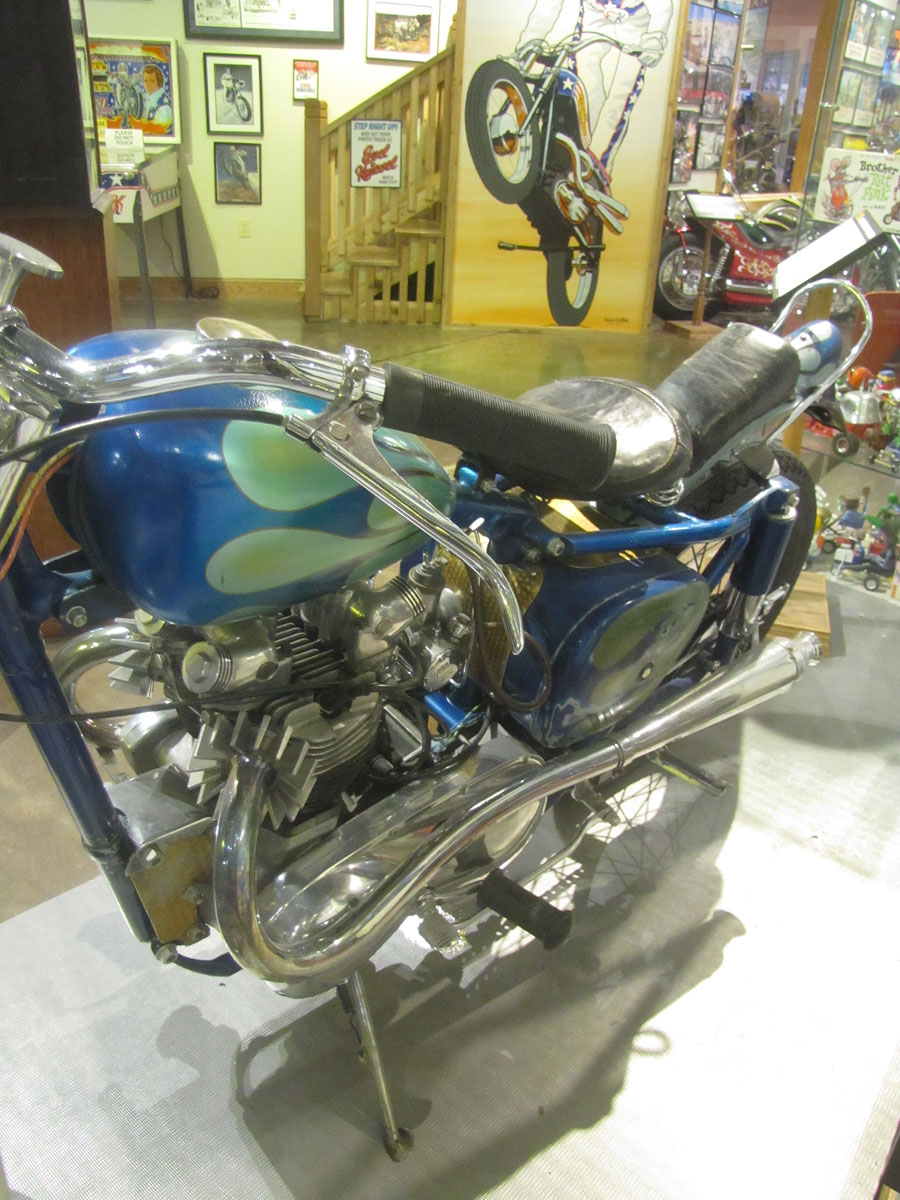
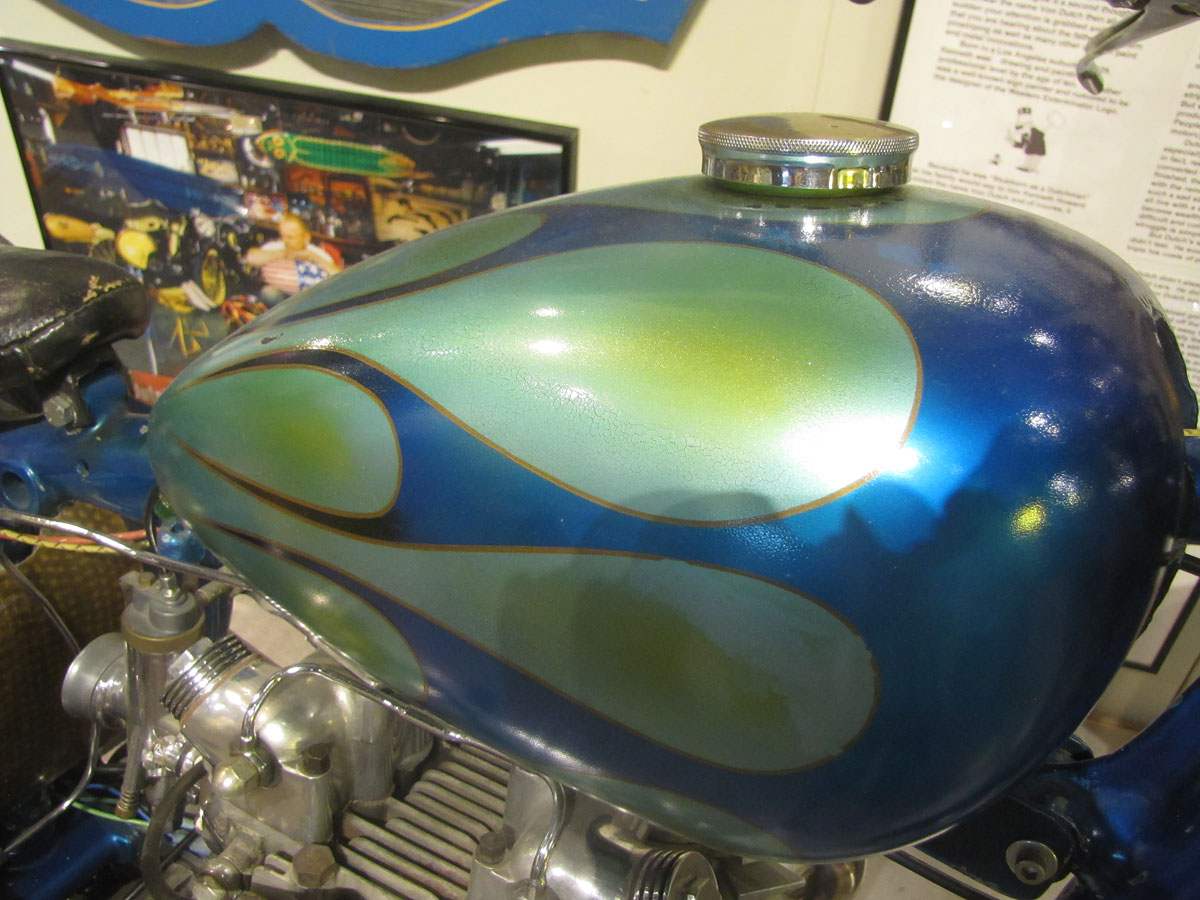
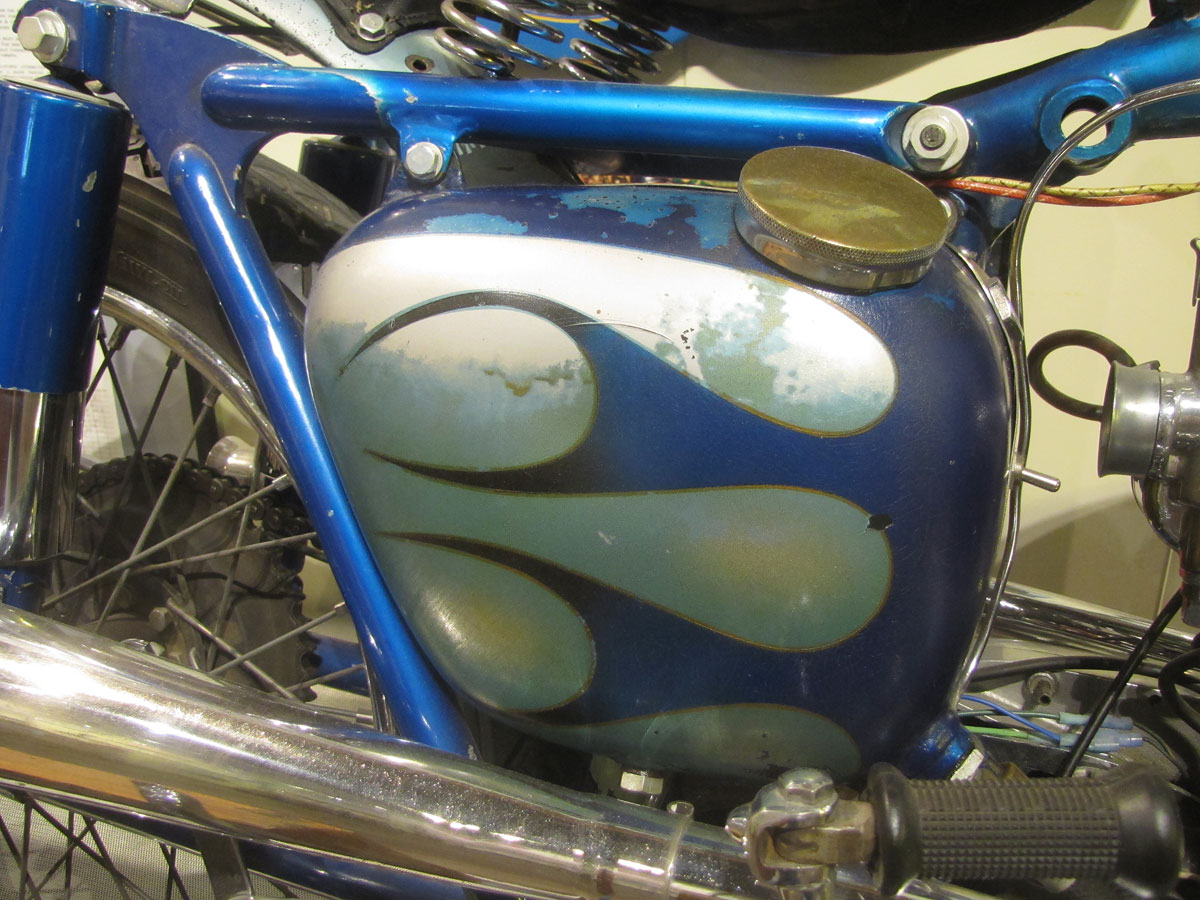
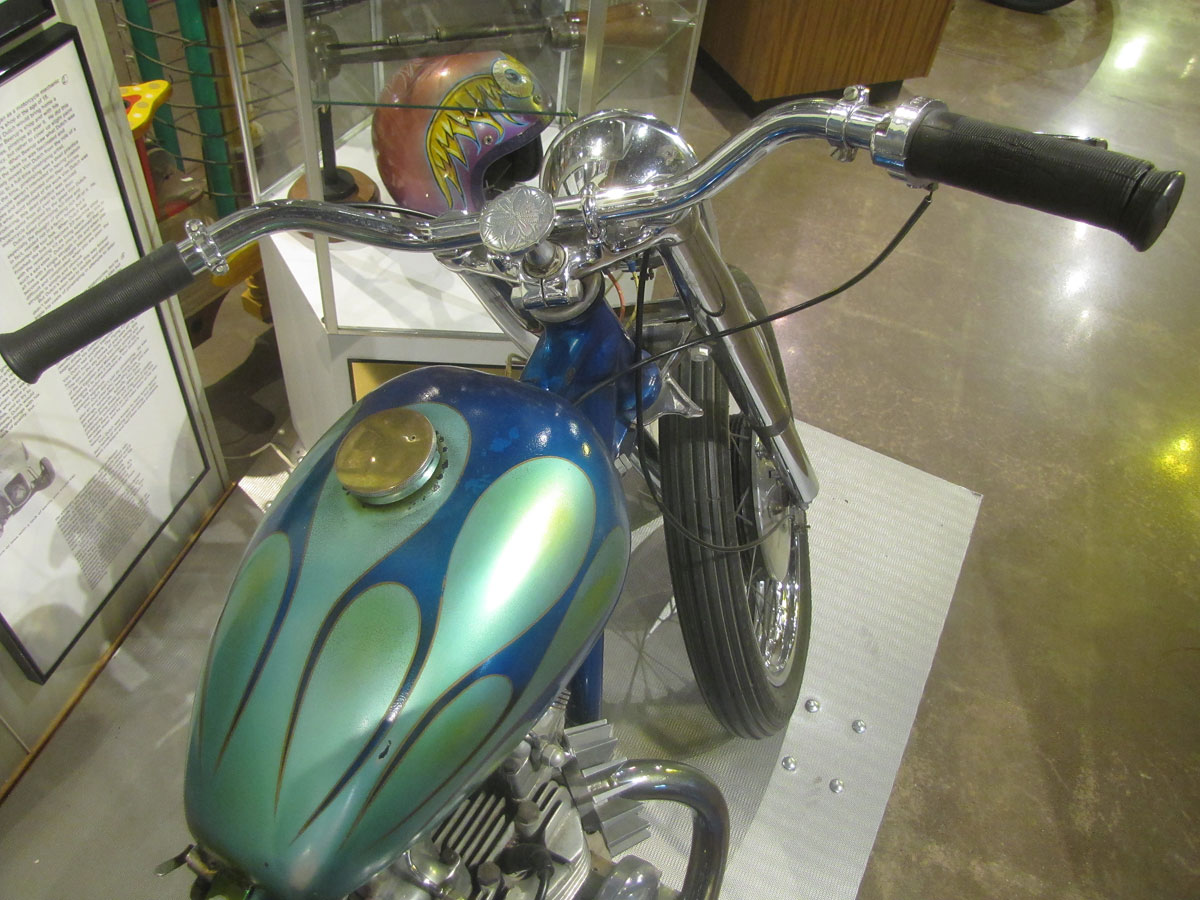
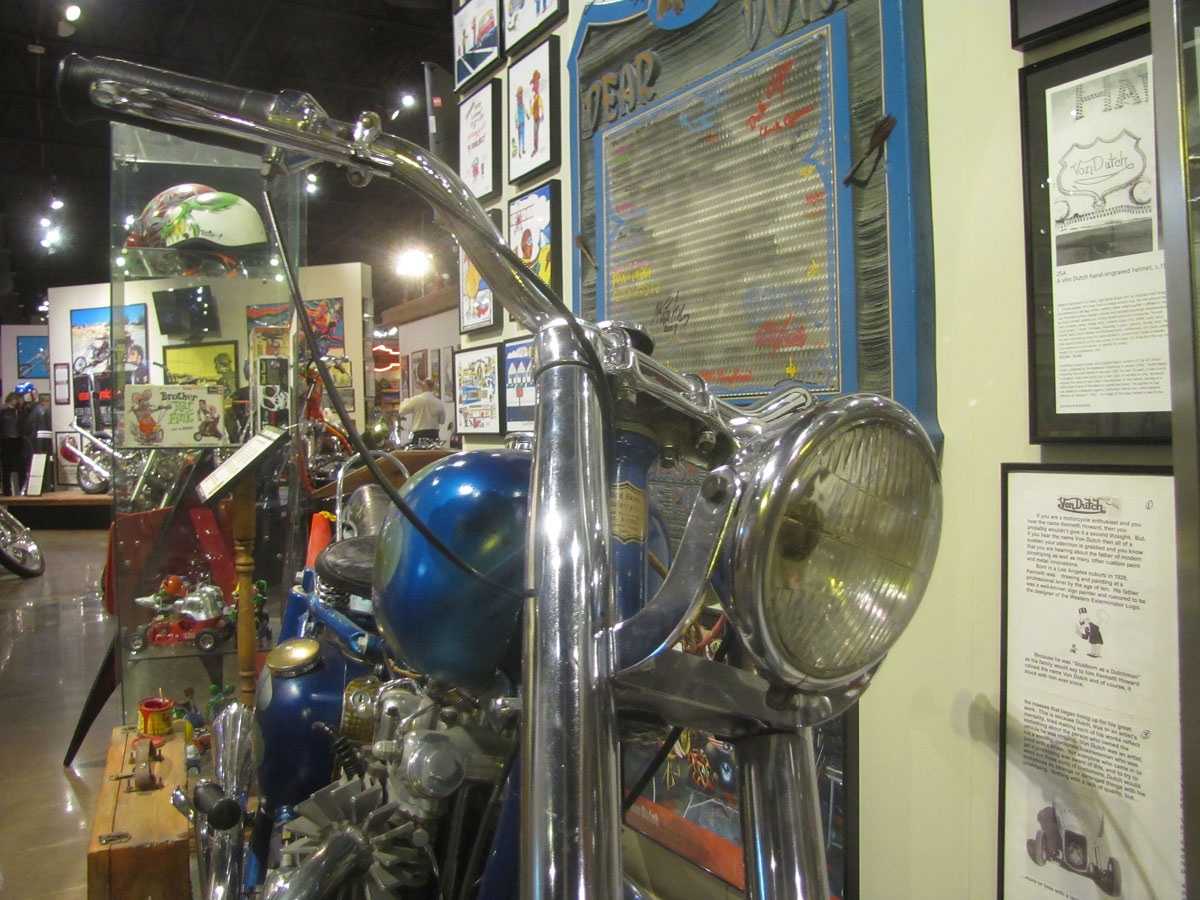
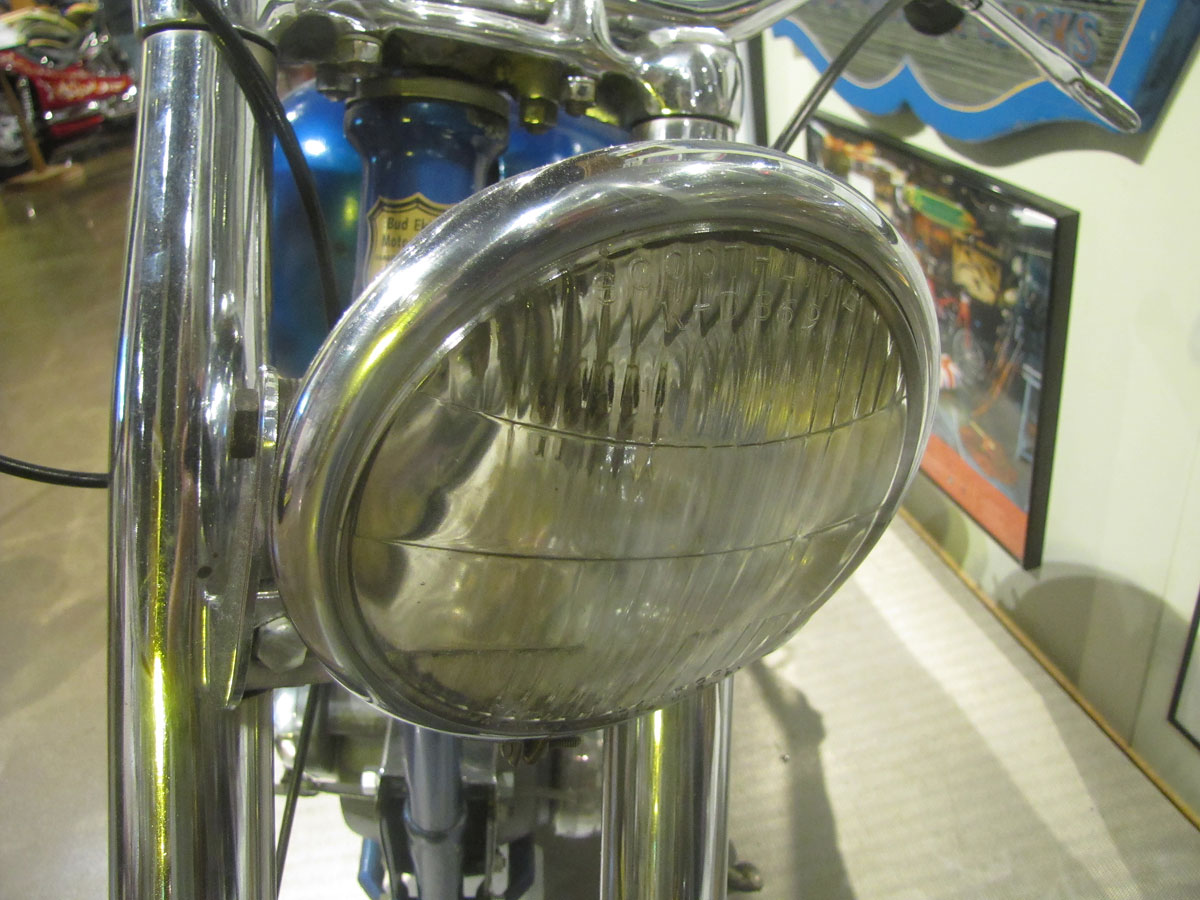
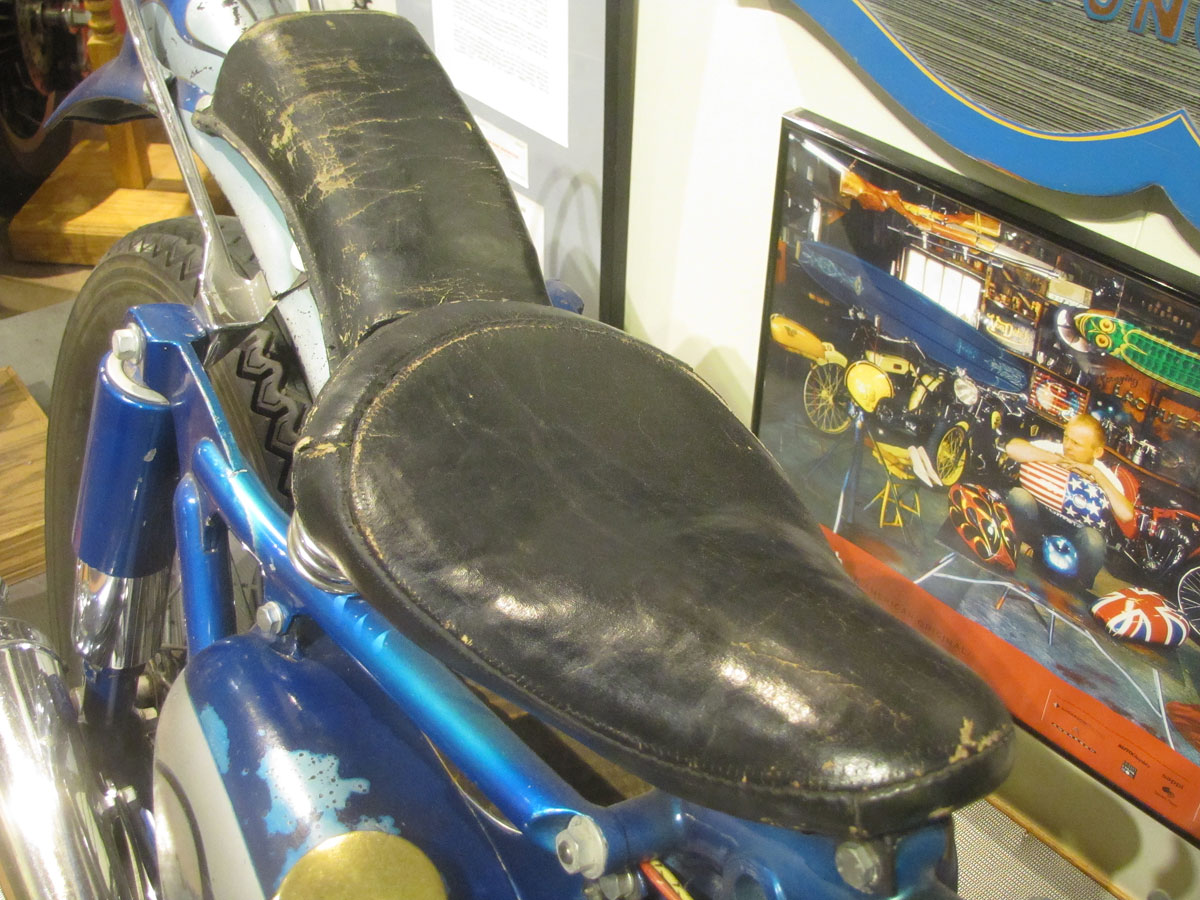
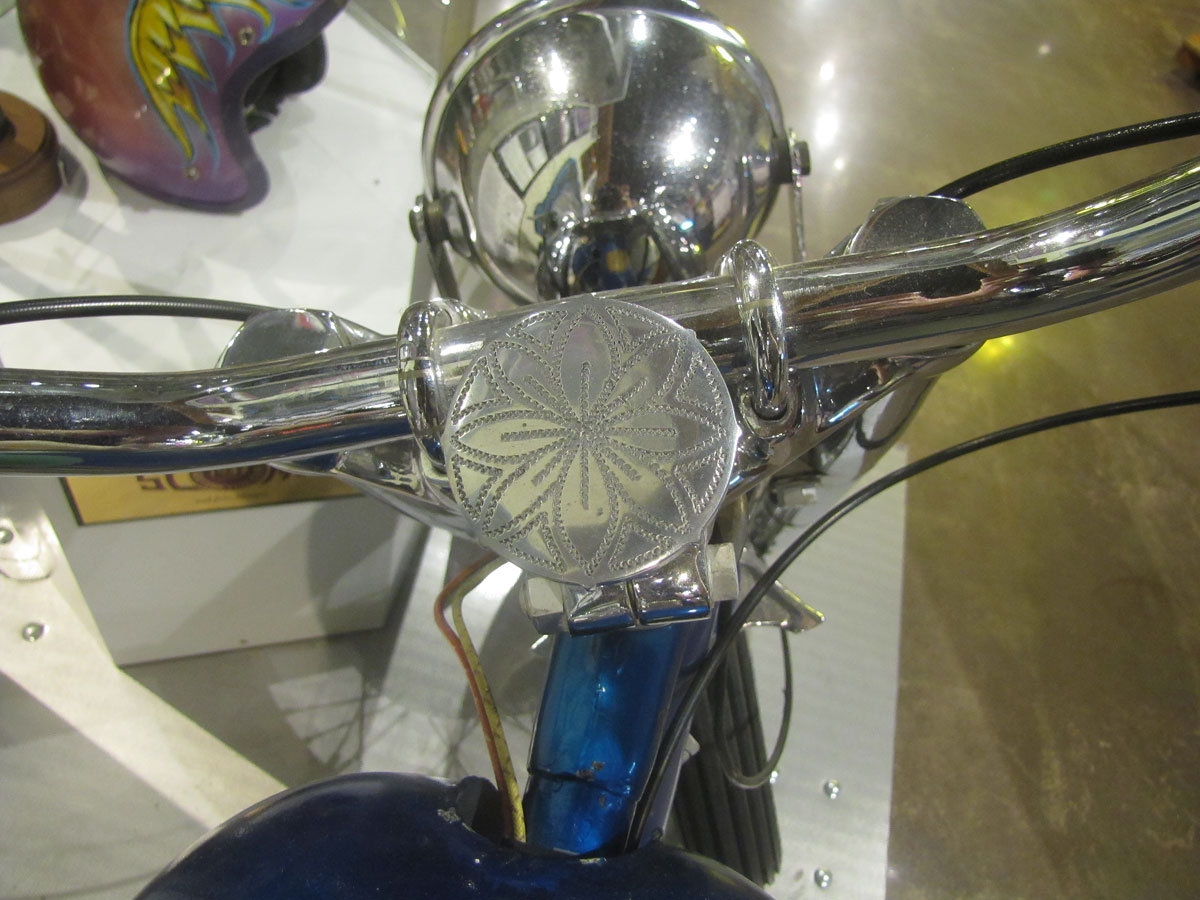
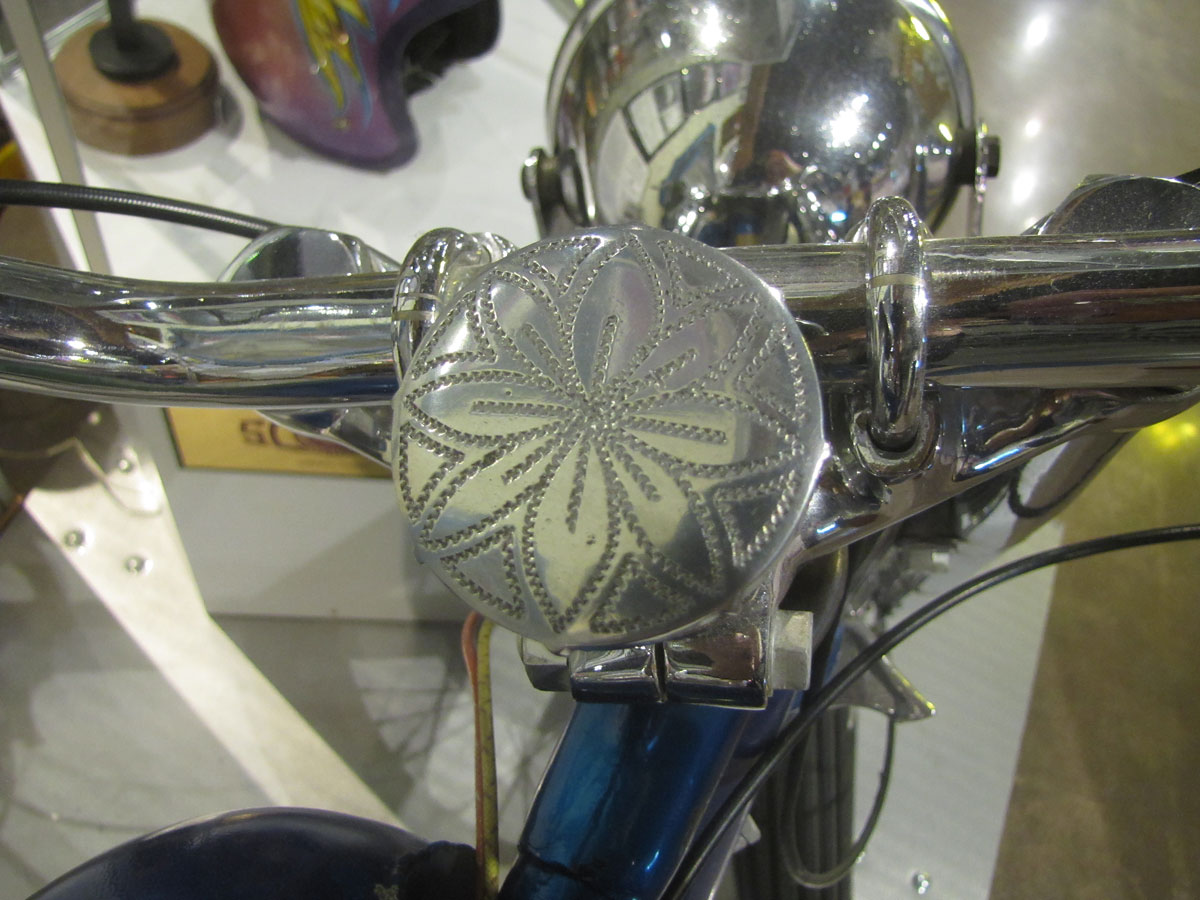

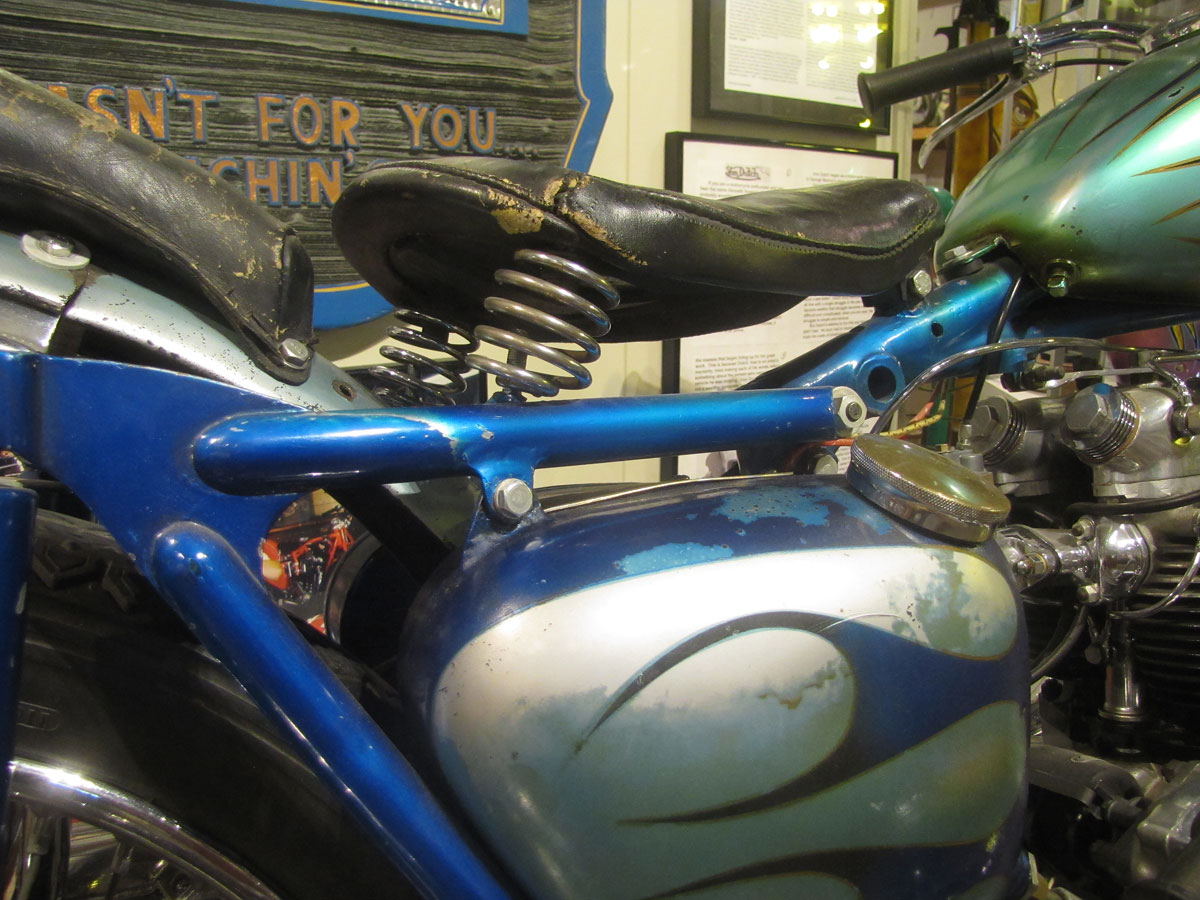
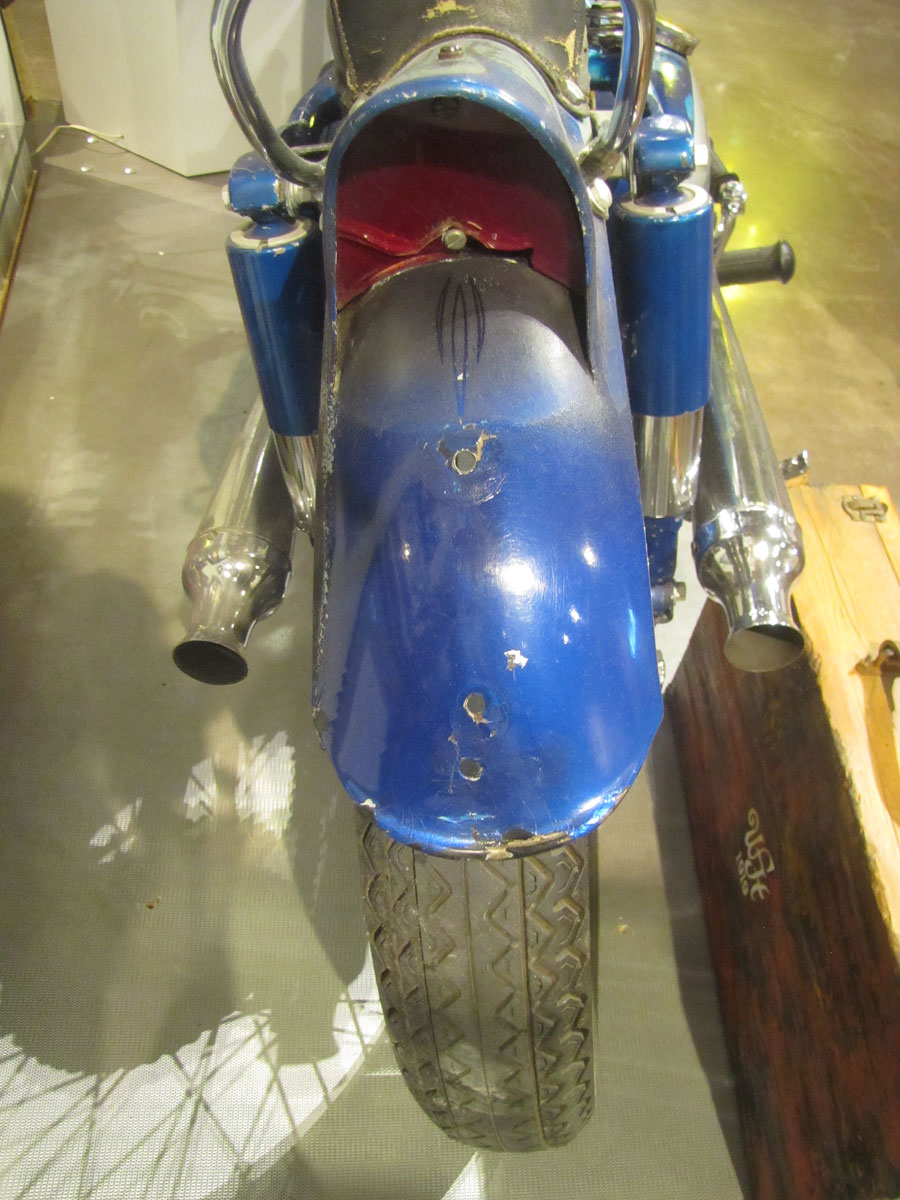
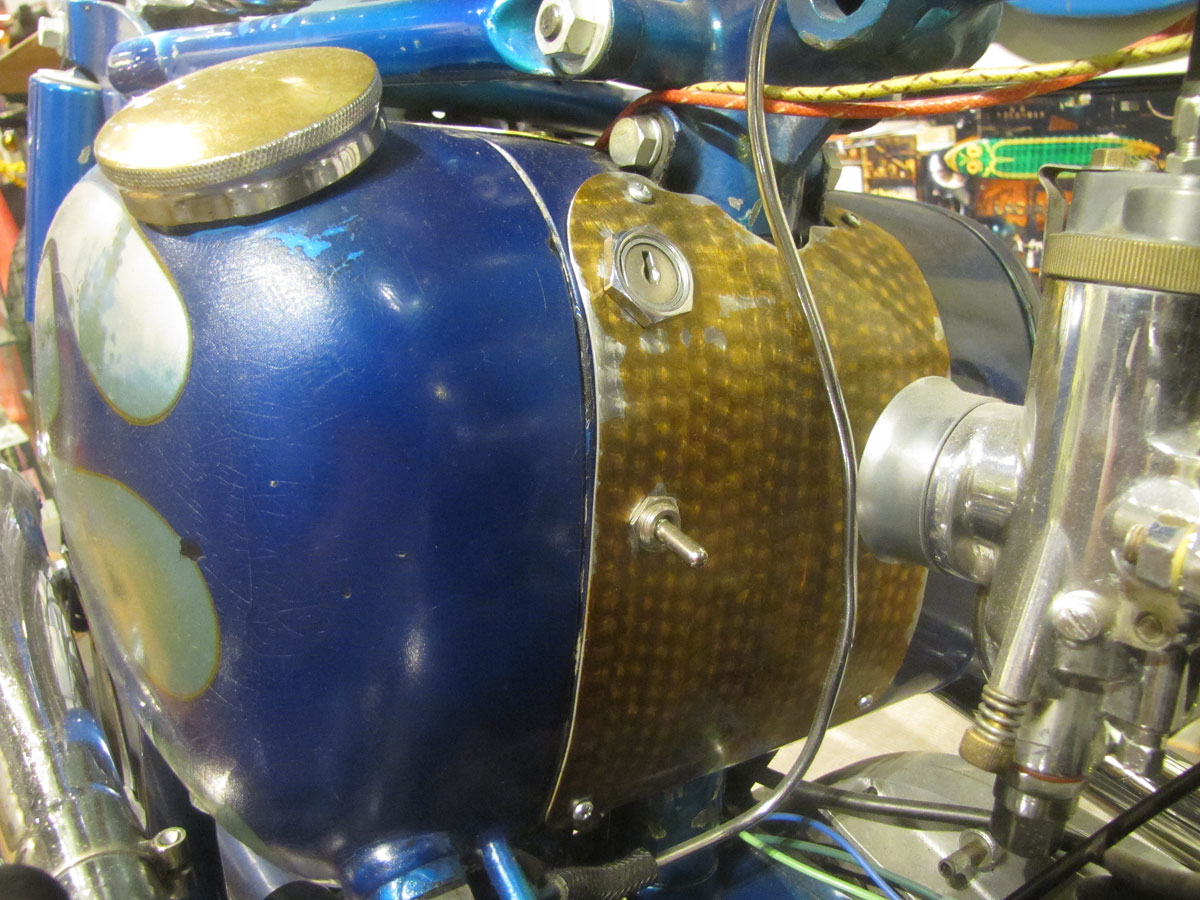
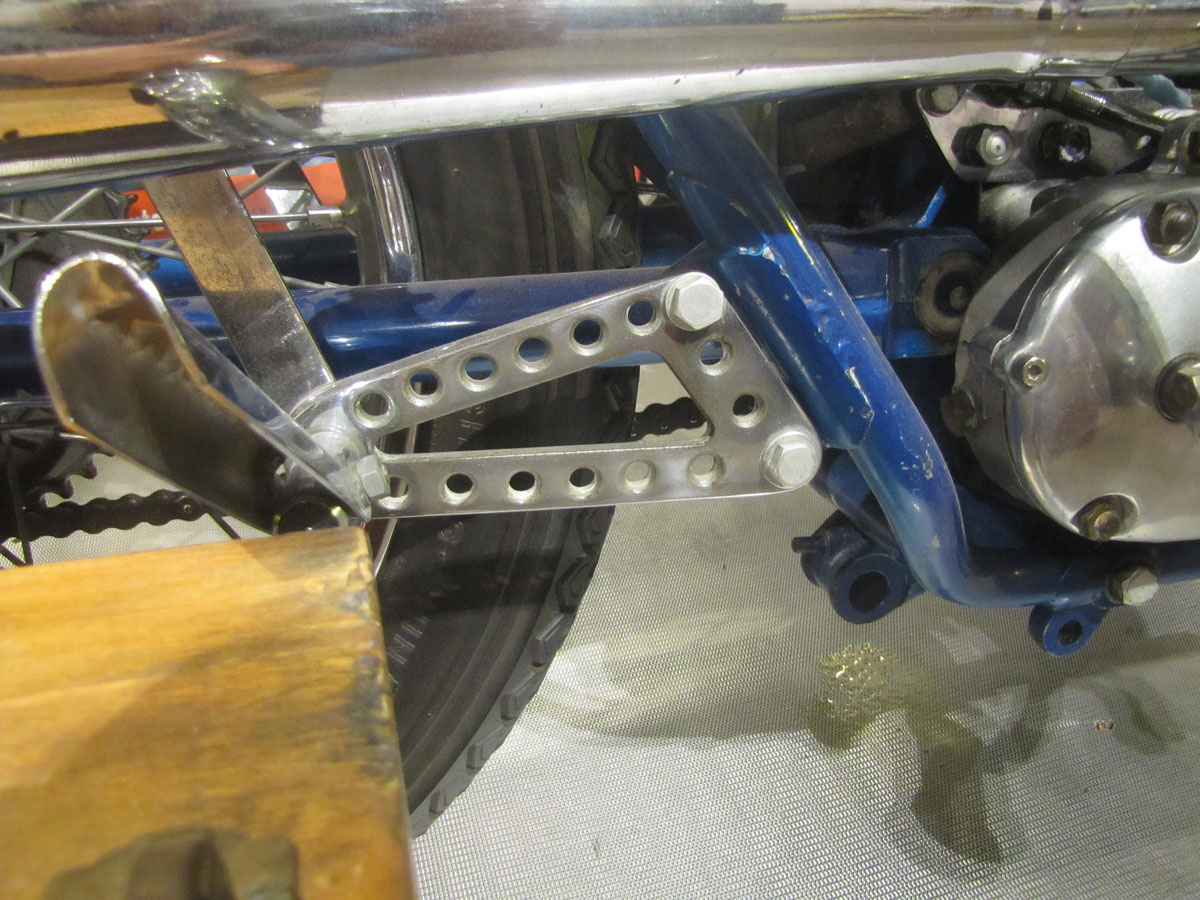
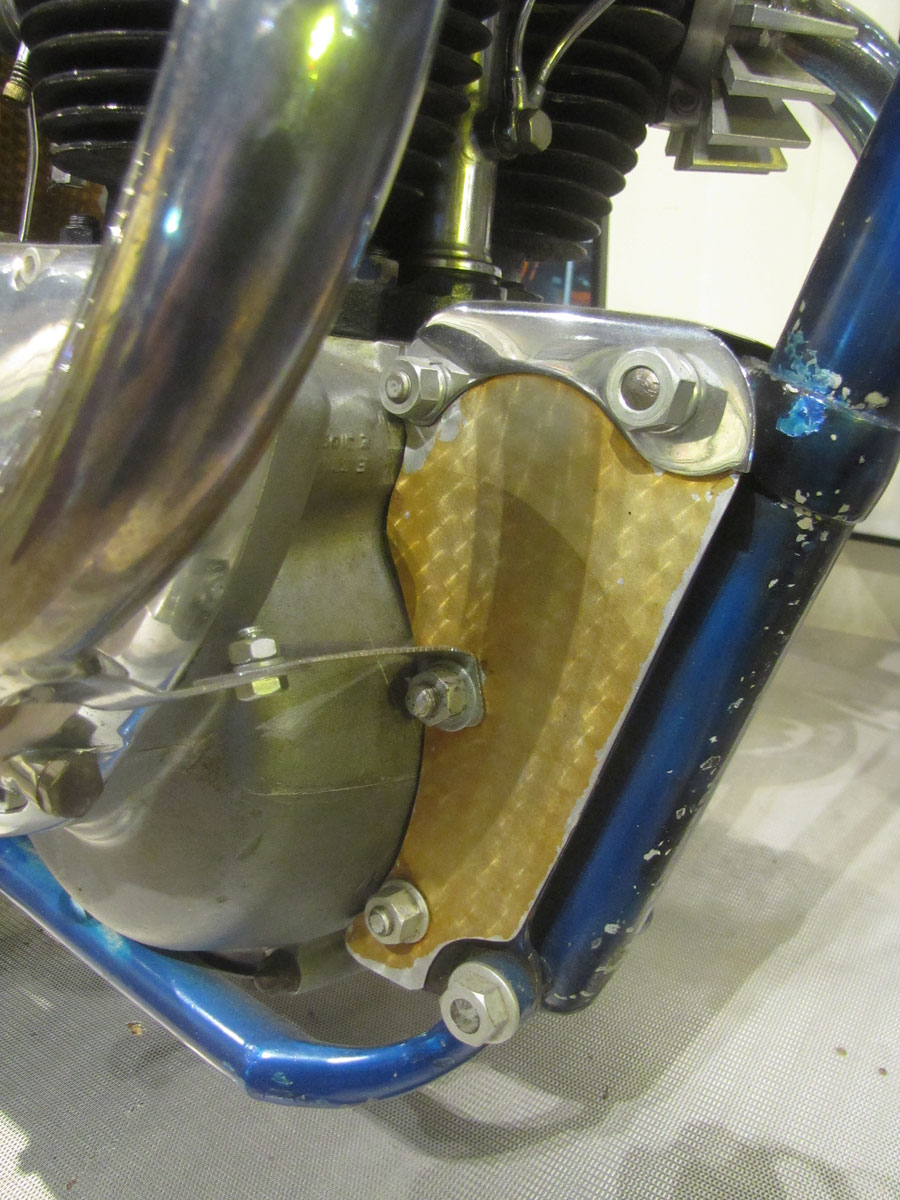
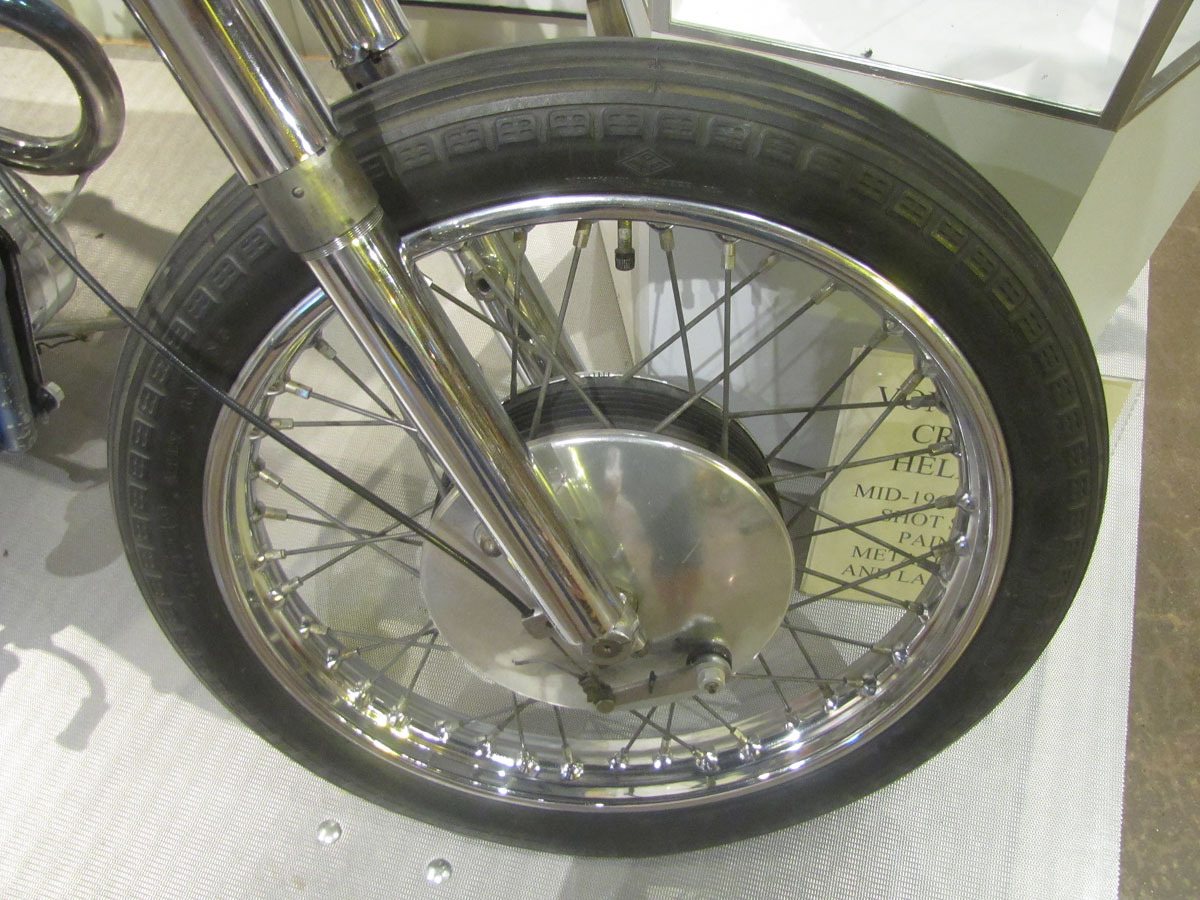
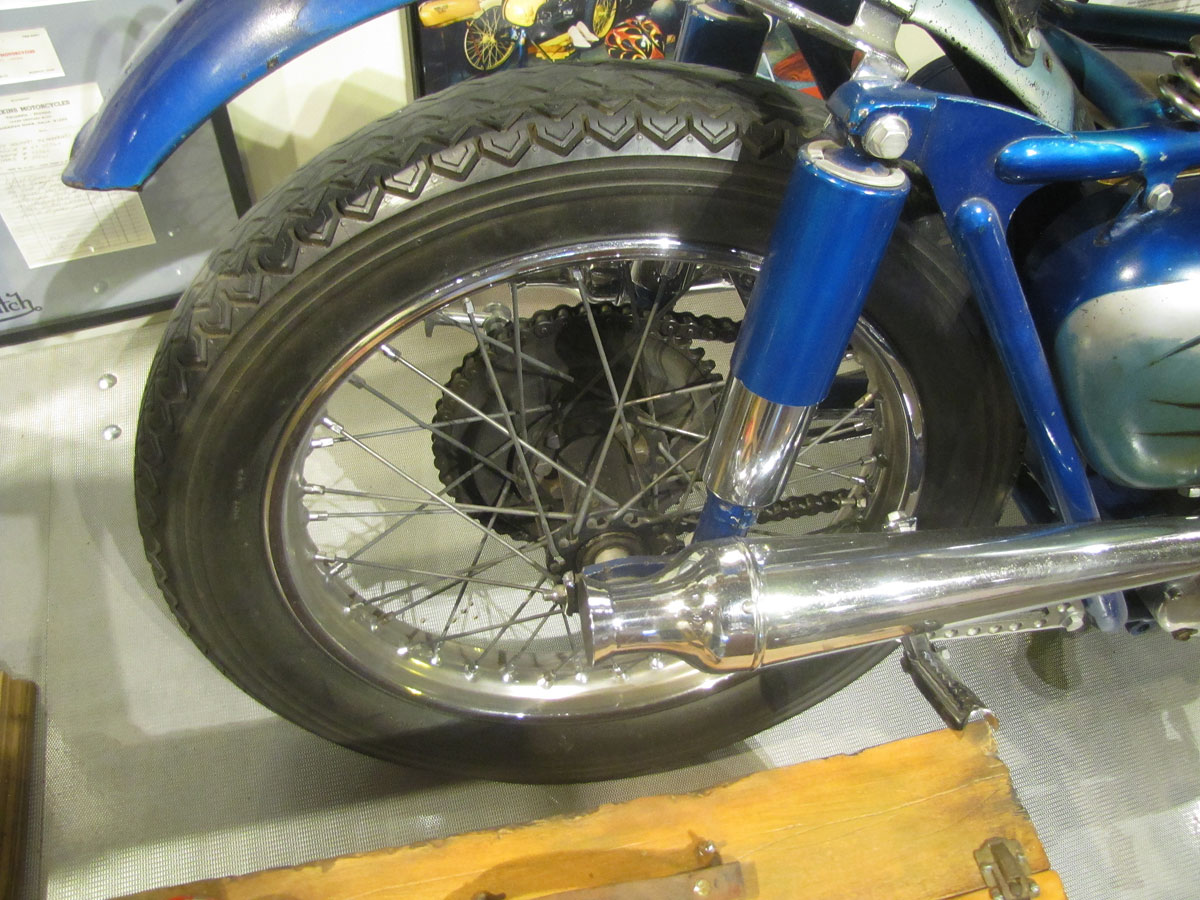
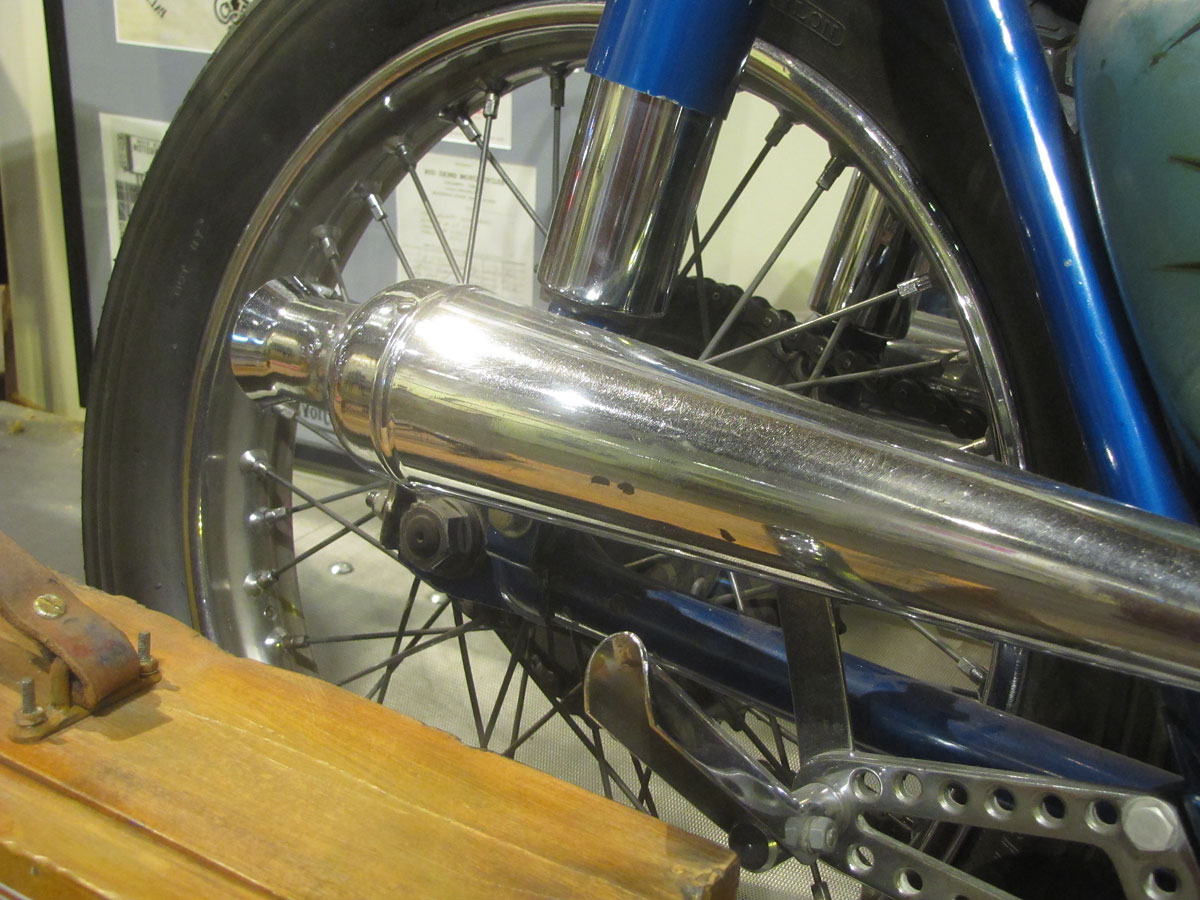
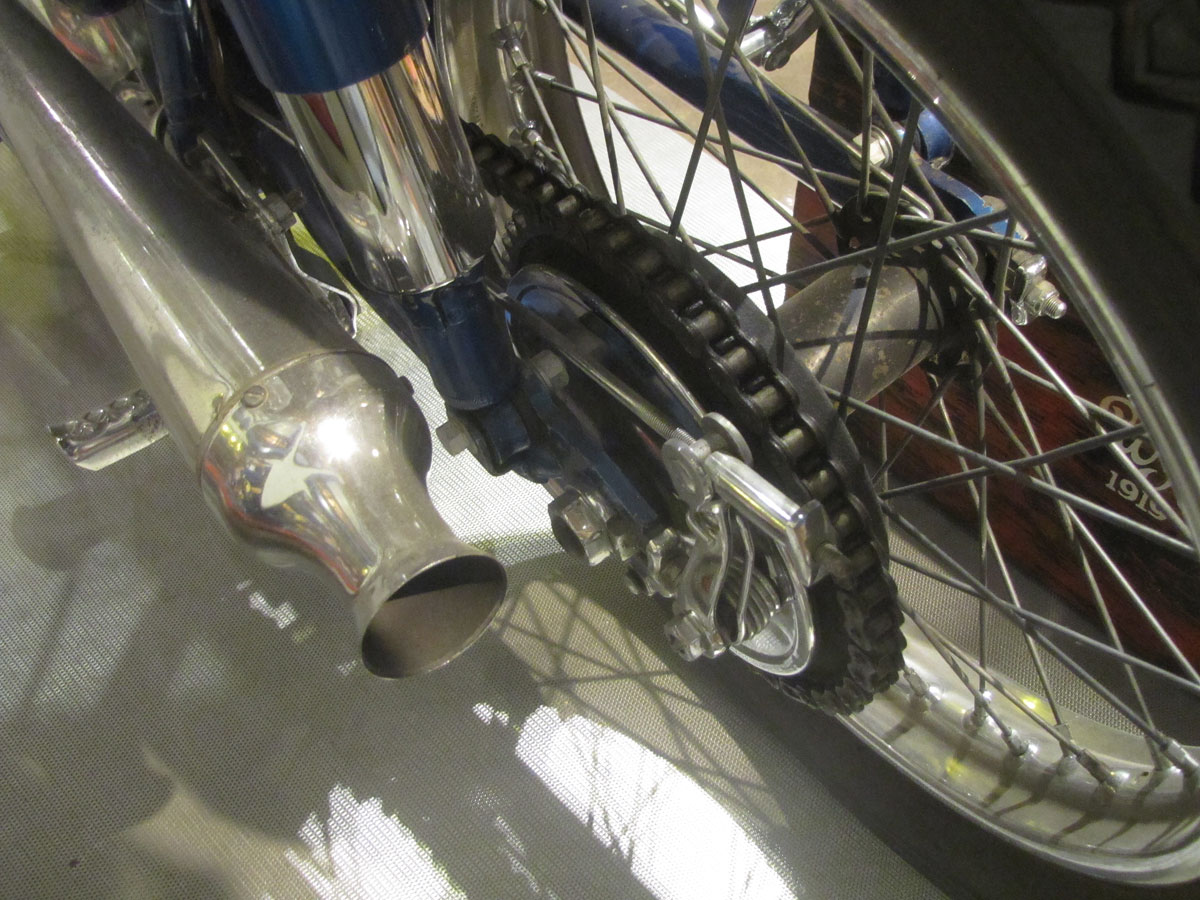
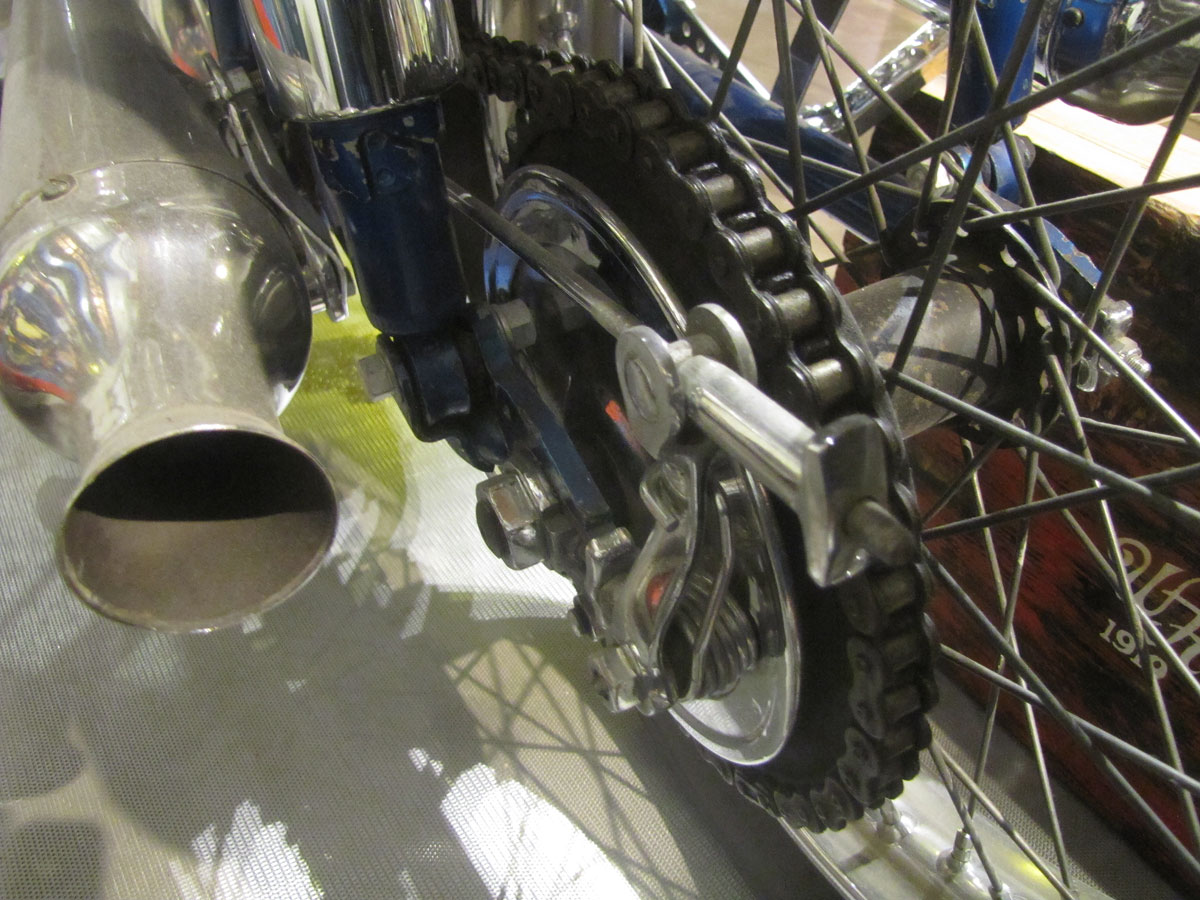
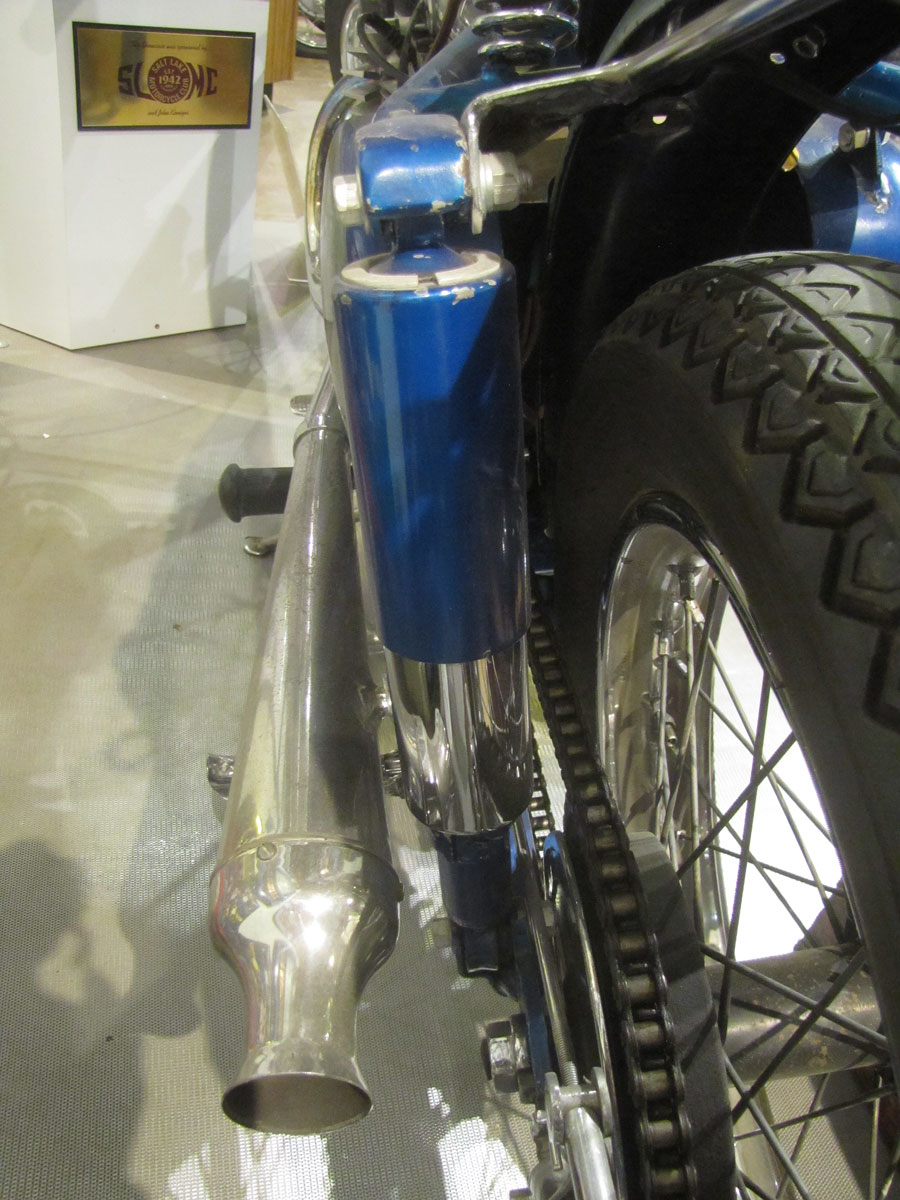
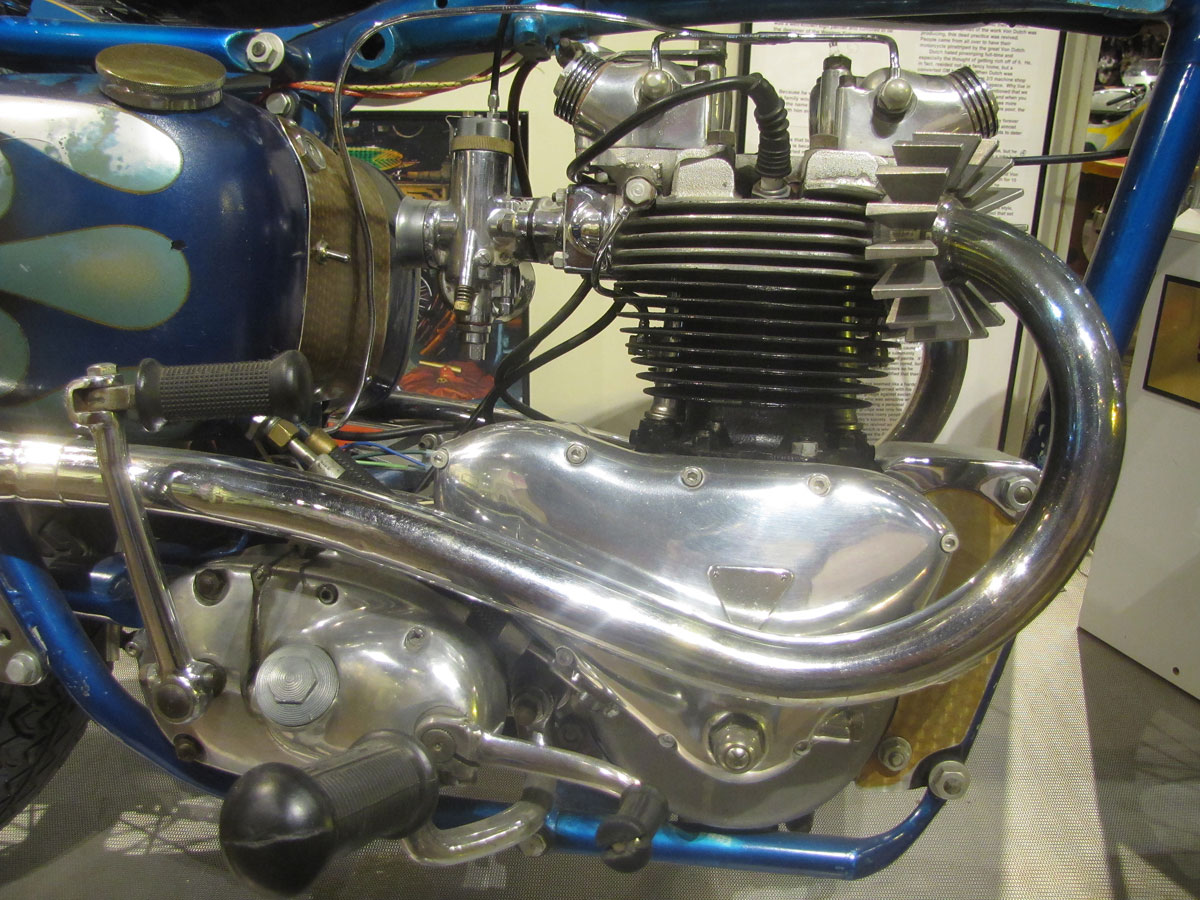
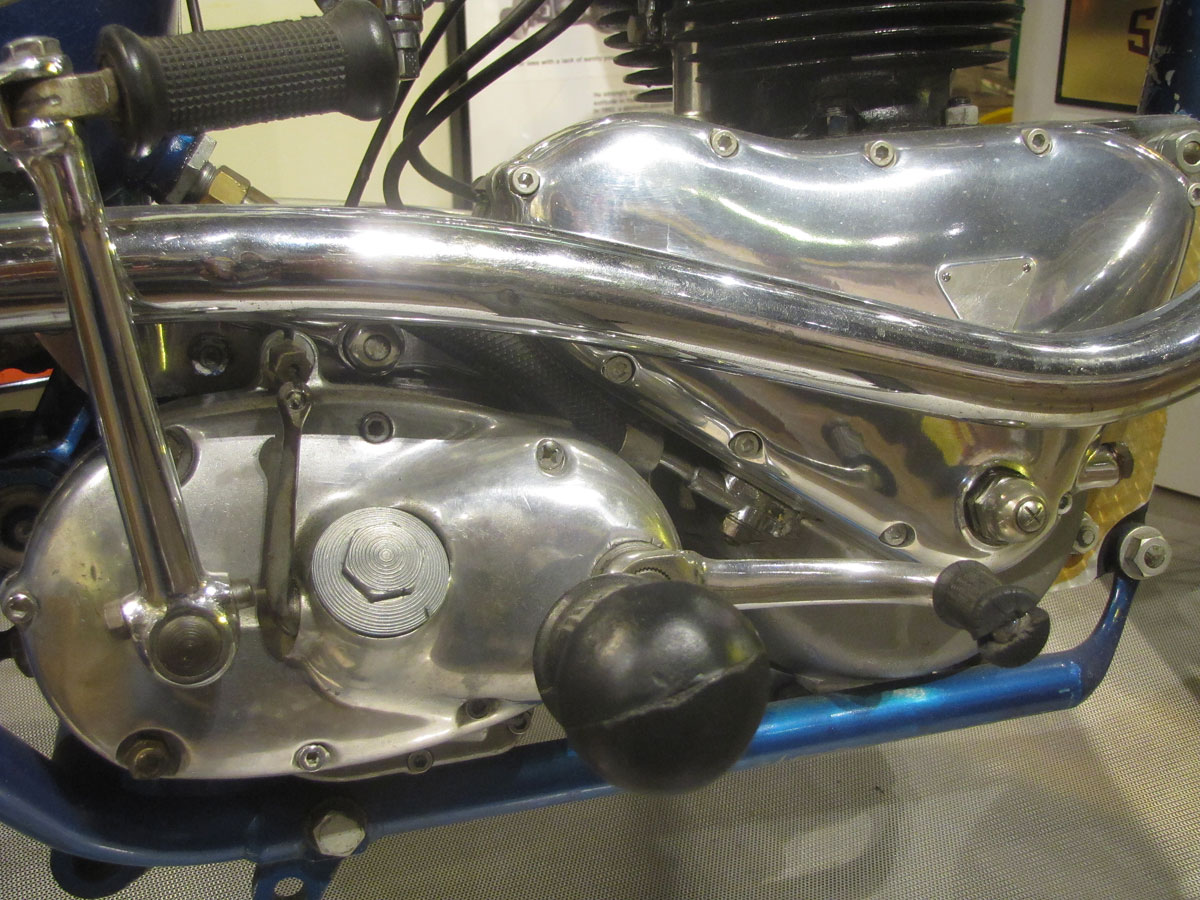
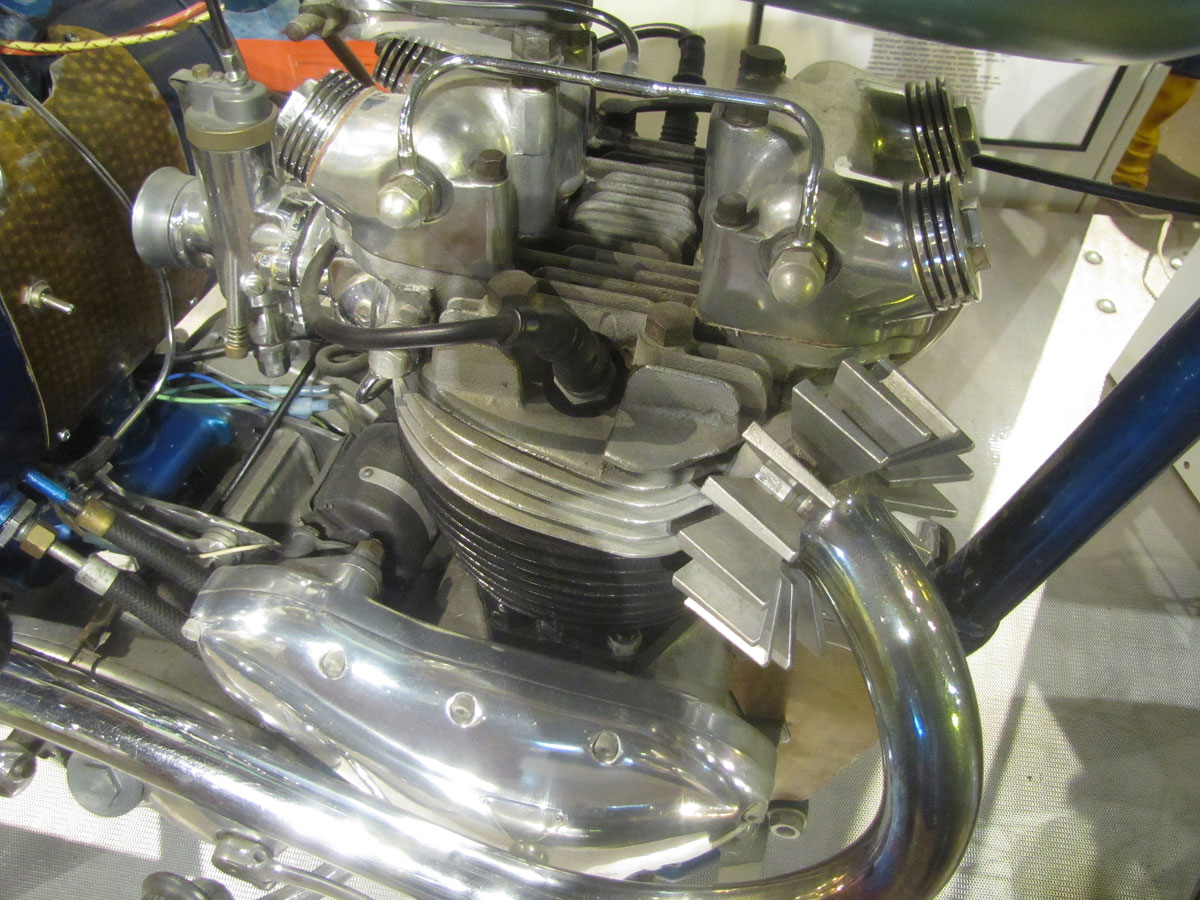
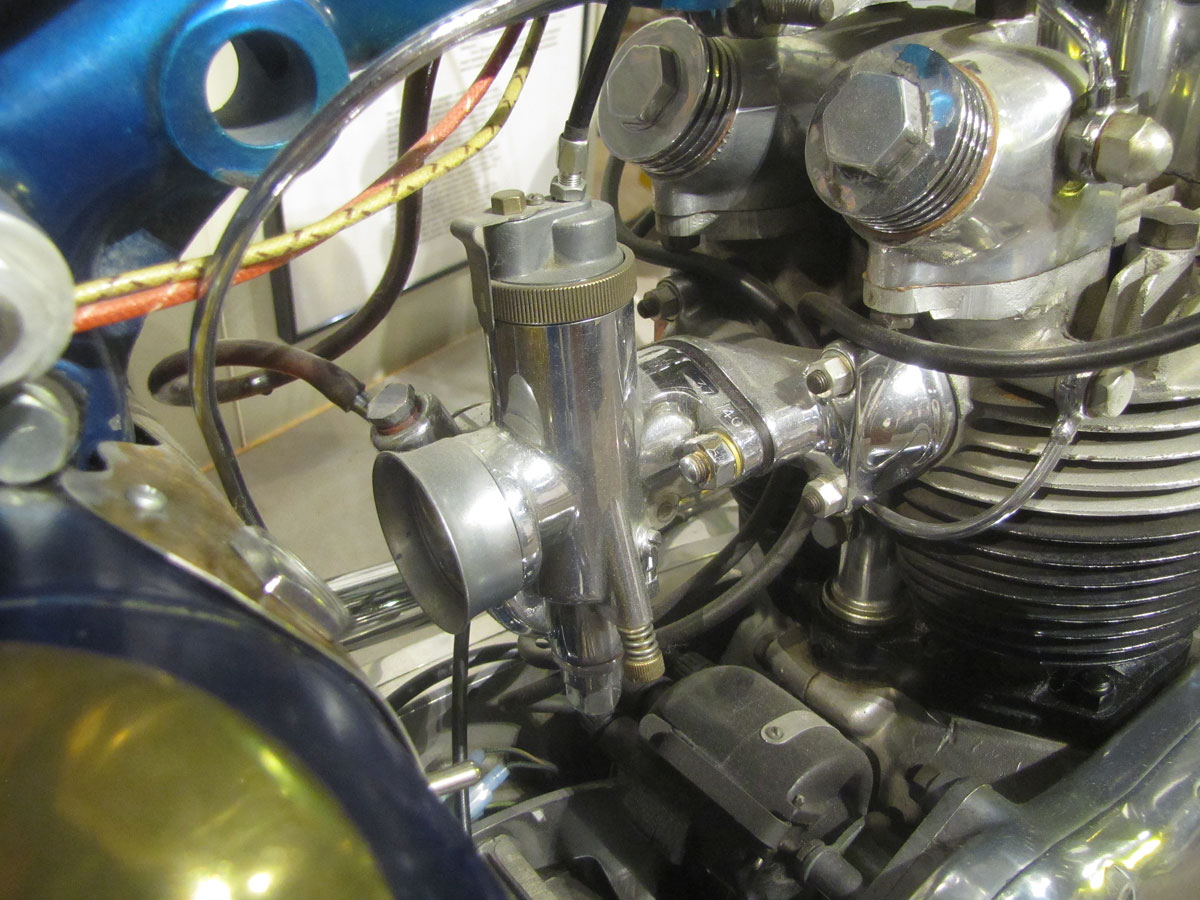
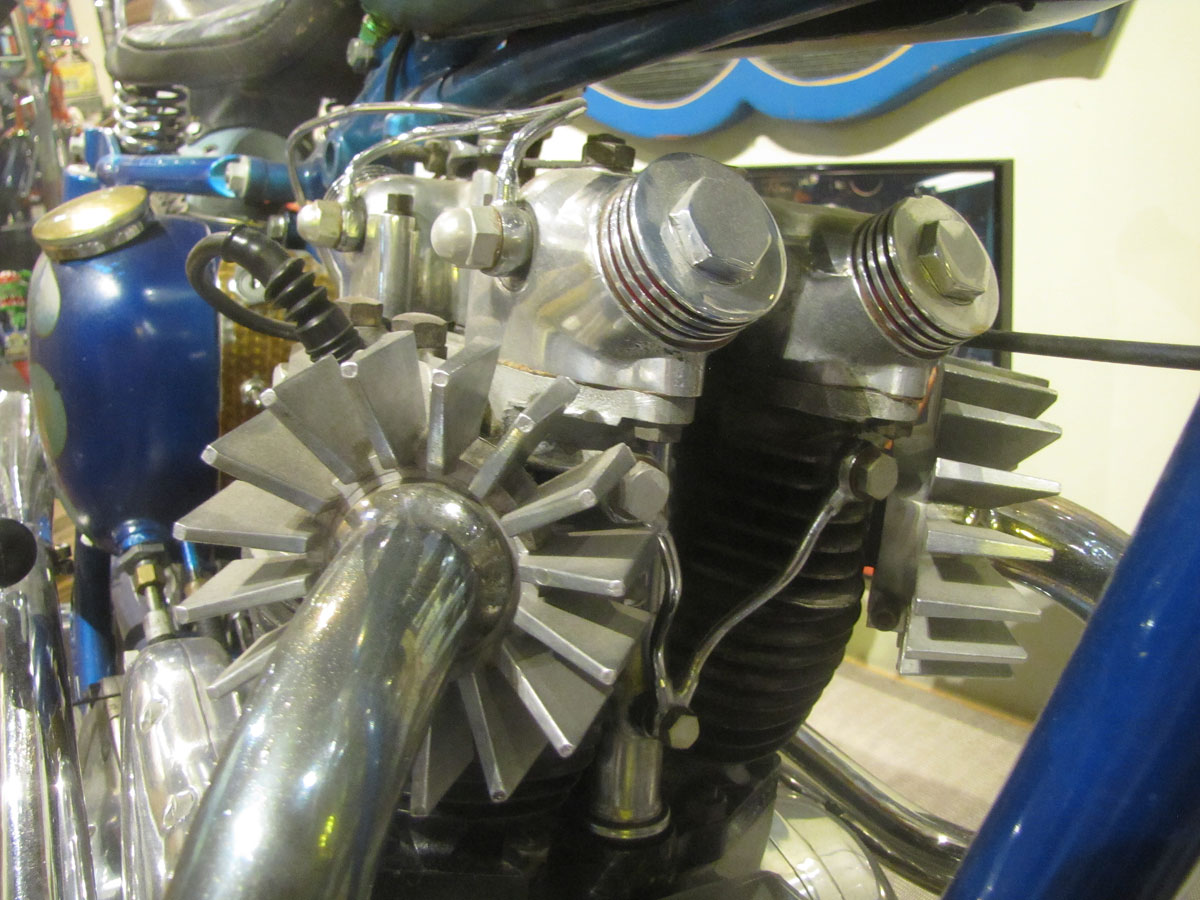
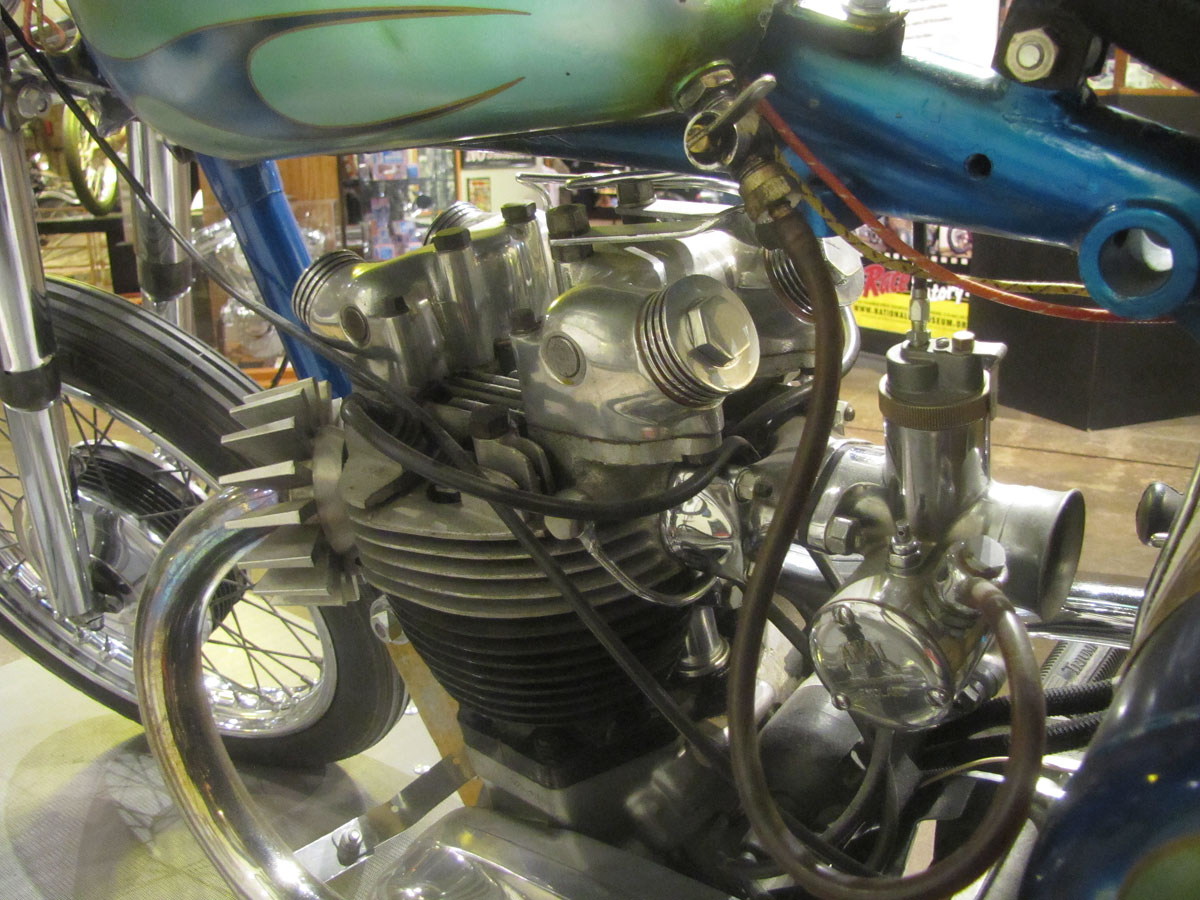
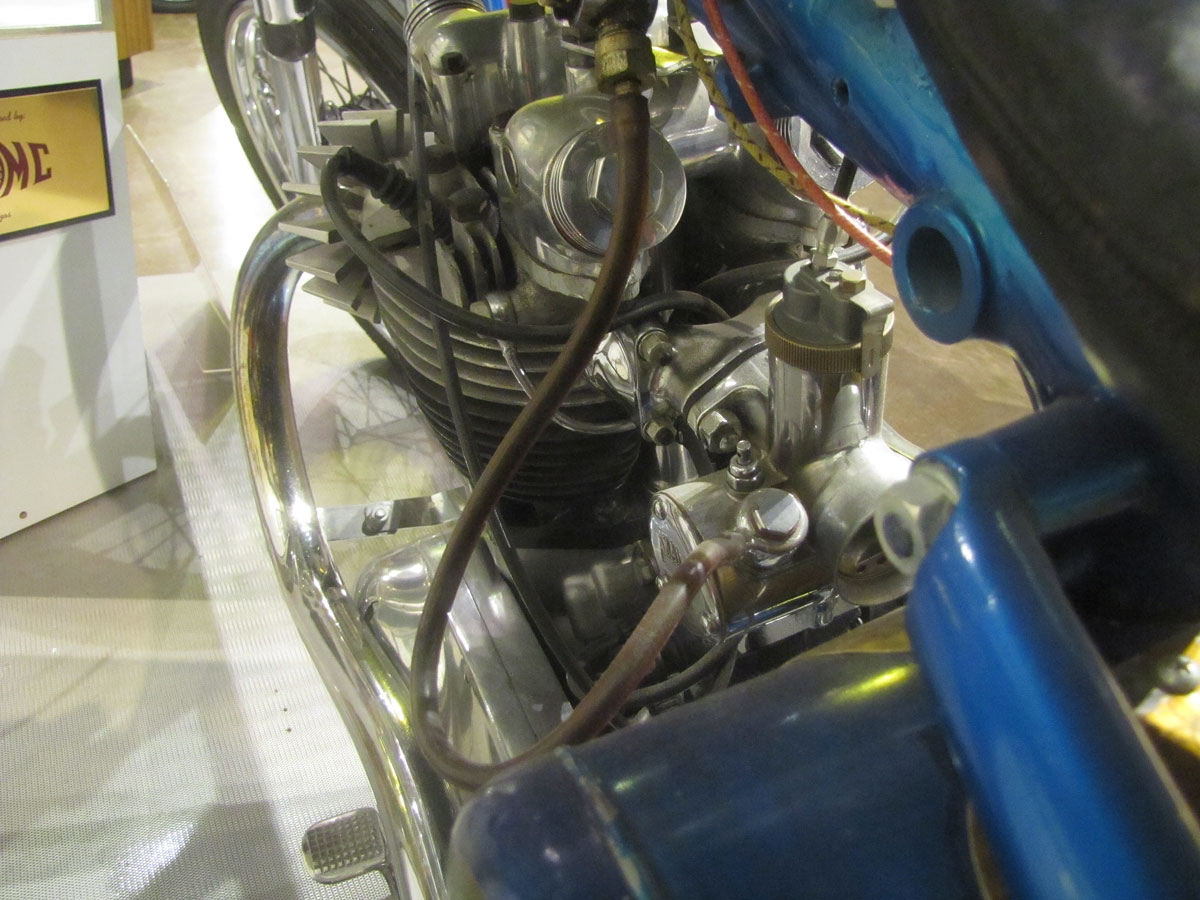
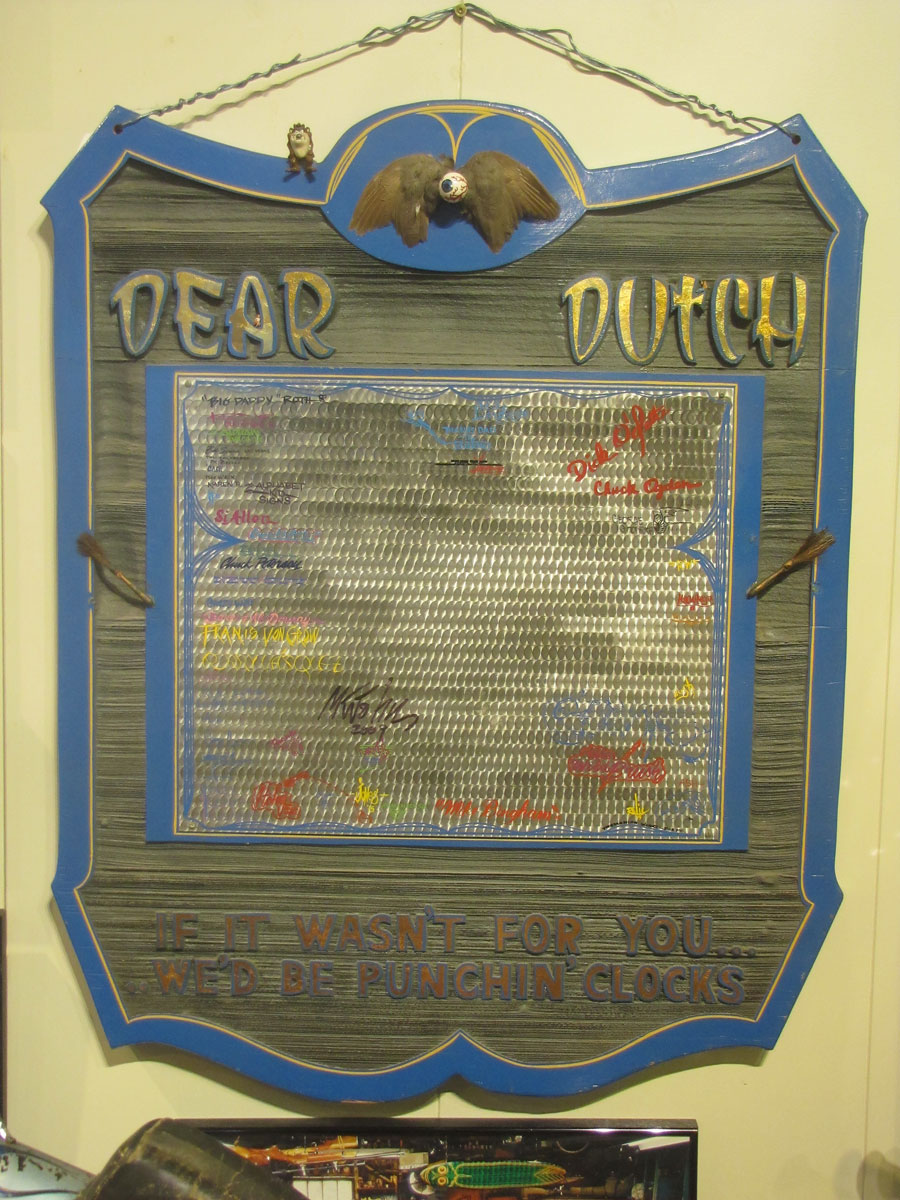
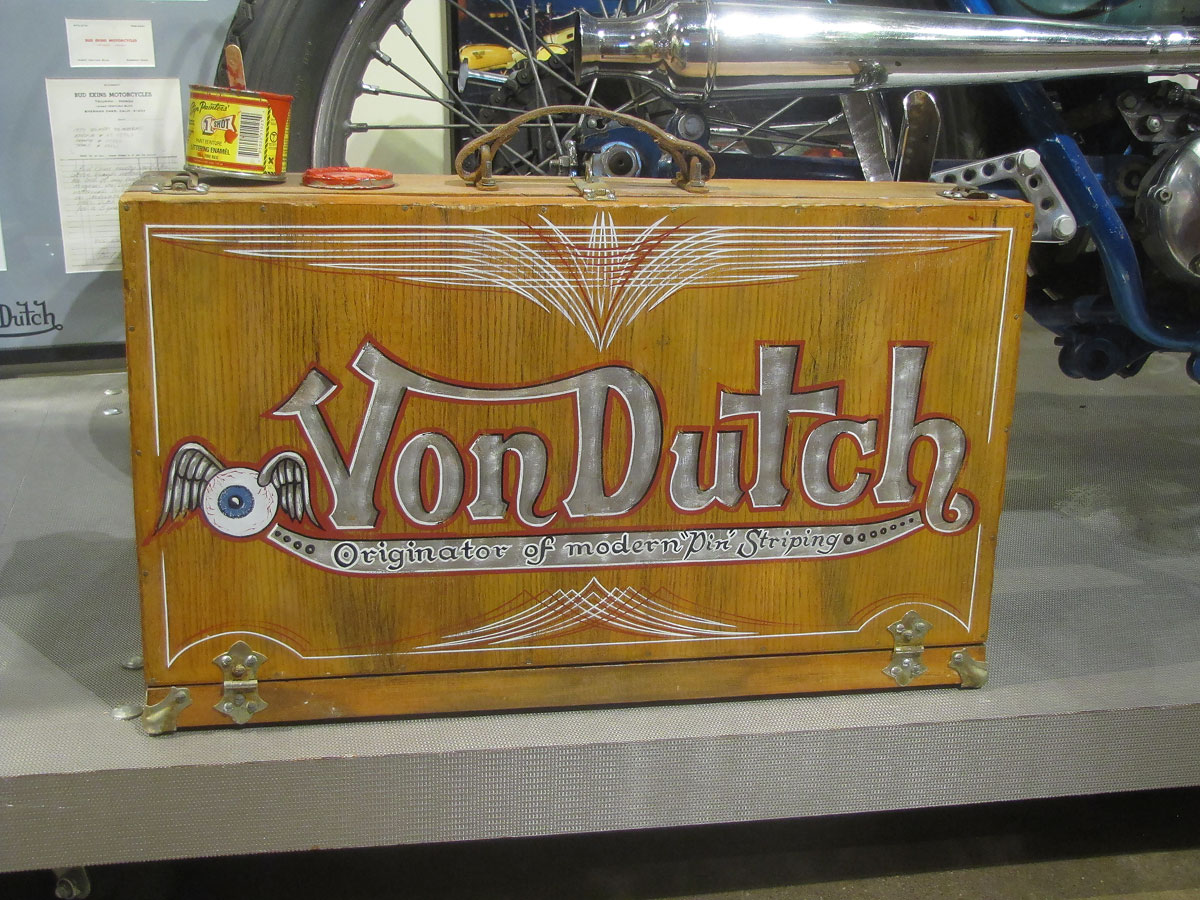
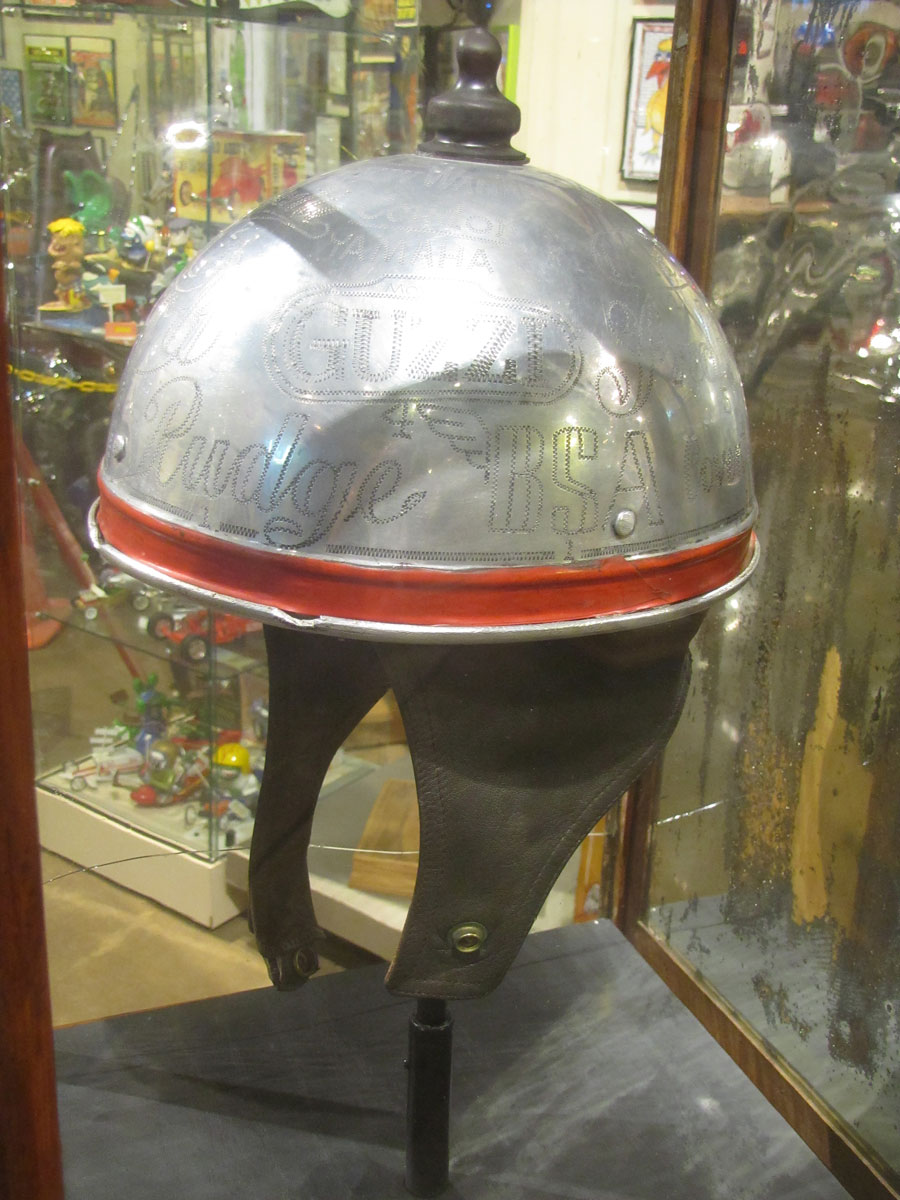
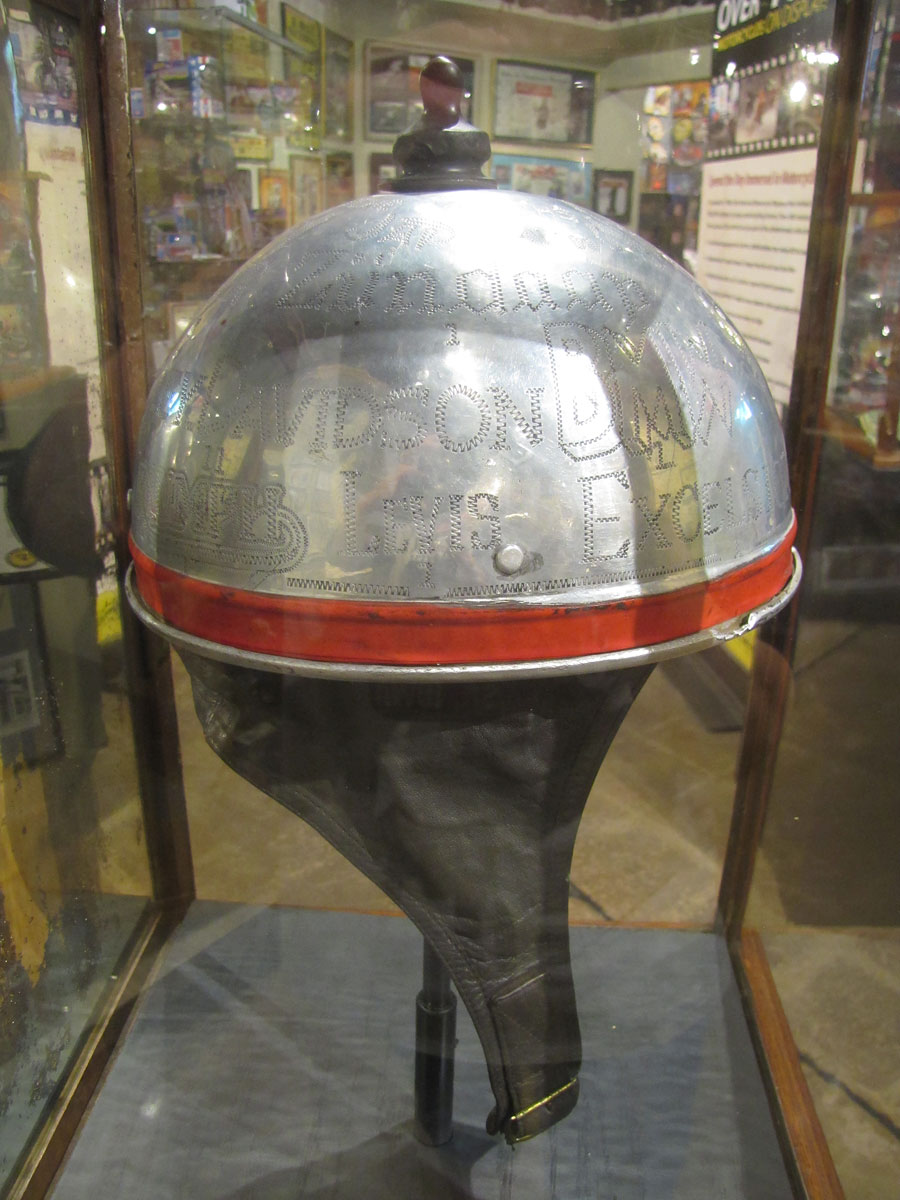
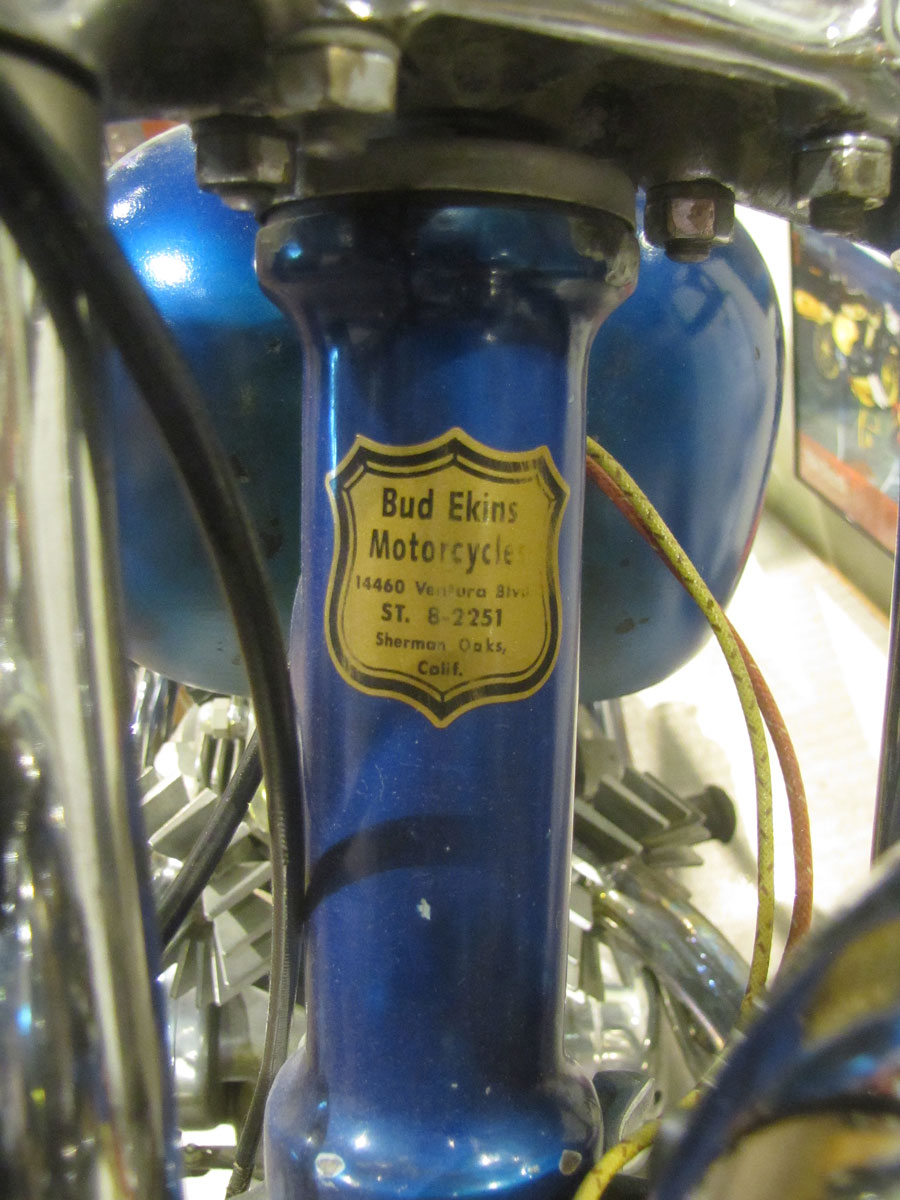


I would call the paint job blue flames.
Back in the 60s my friend Herb Gunnison read about Von Dutch .He jumped on his bike and rode half way across the county to Von Dutch’s shop.Von Dutch took out his paints and brushes and started the pin striping before Herb had even had a chance to say what he wanted ,Von Dutch said to Herb “the striping for this bike was decided before we were even born ” . It turned out perfect. Sadly the bike was stolen and that piece of Von Dutch art is lost to the ages .
40 Cubic Inches I bought a new 1969 Bonneville for $1425.00 that was real fast a do everything bike. Wrecked a 1969 TR6 by making a chopper out of it.
Good catch on the cubic inches! Thanks for reading closely.
MM